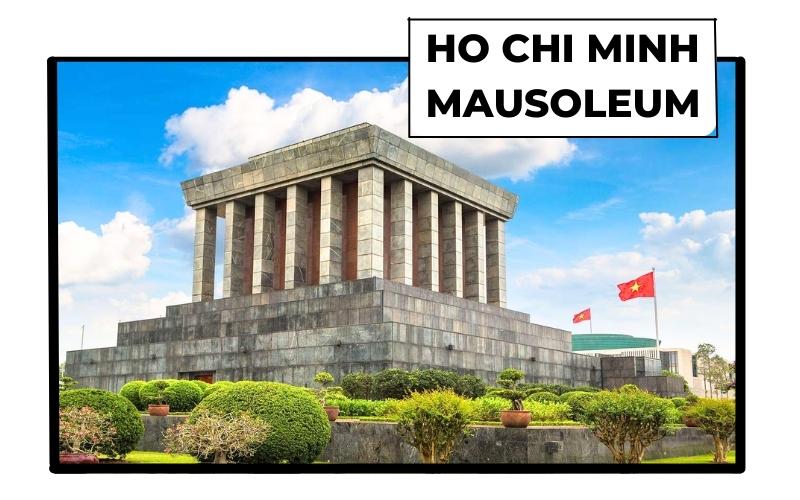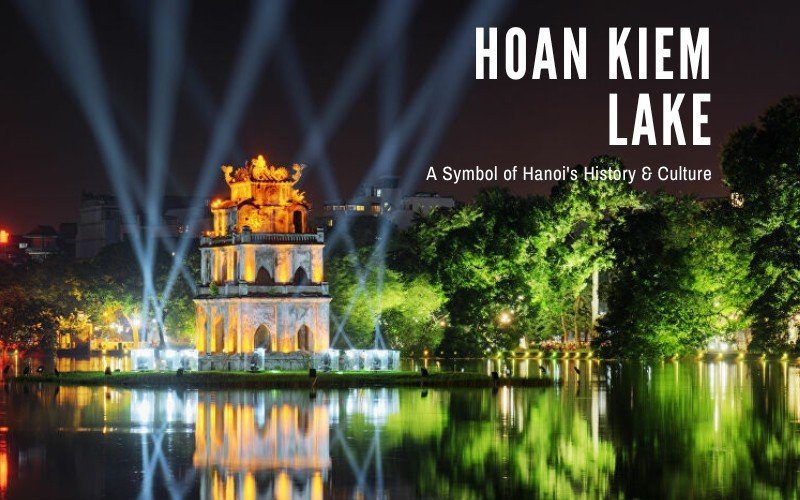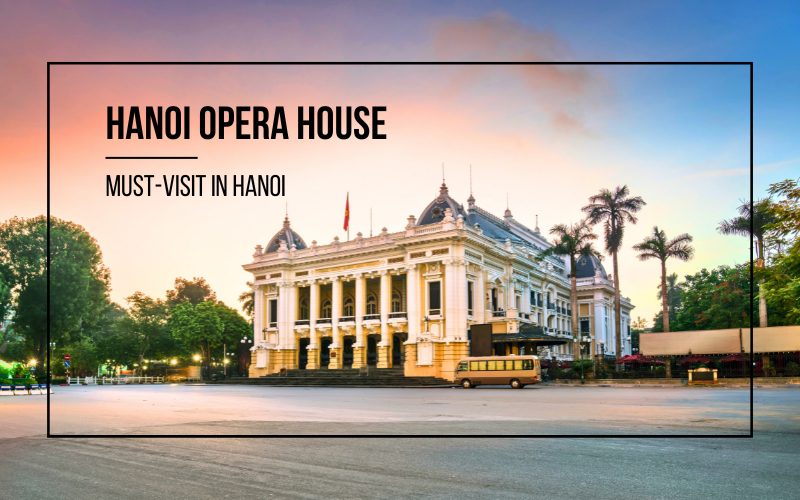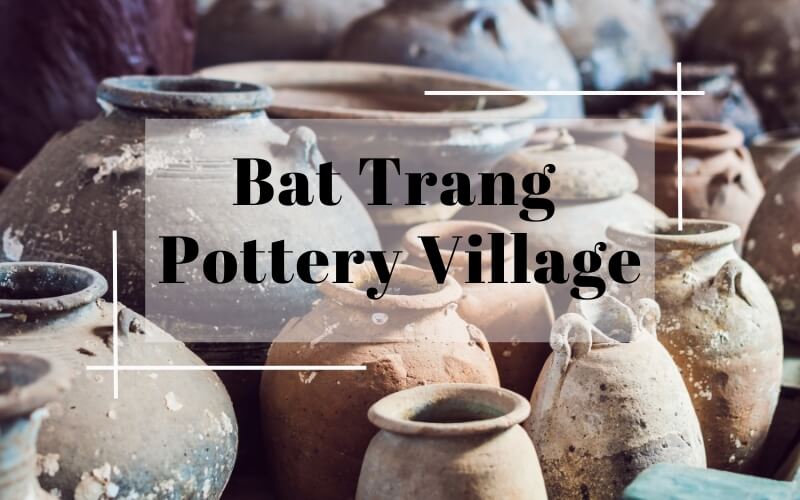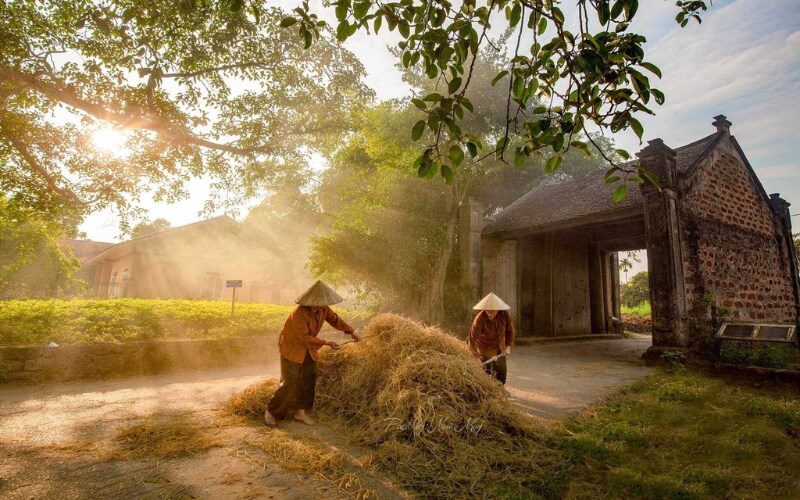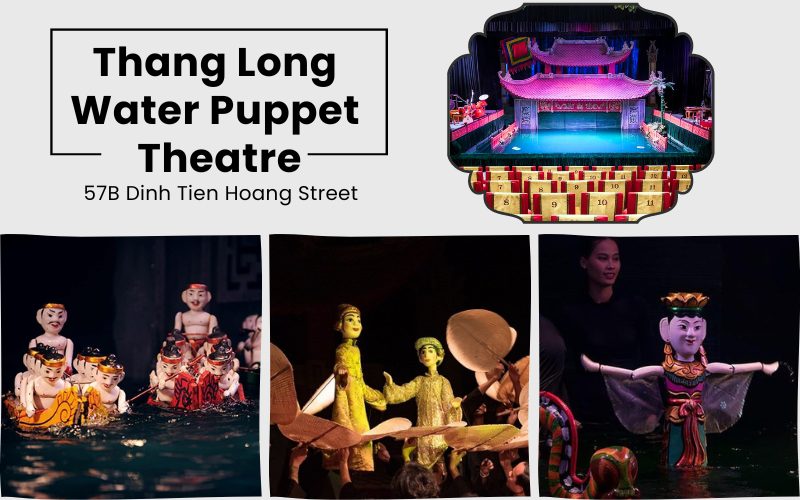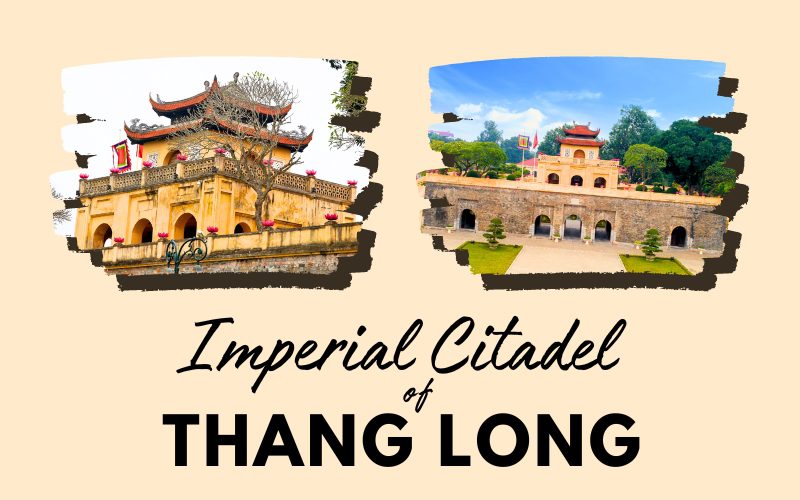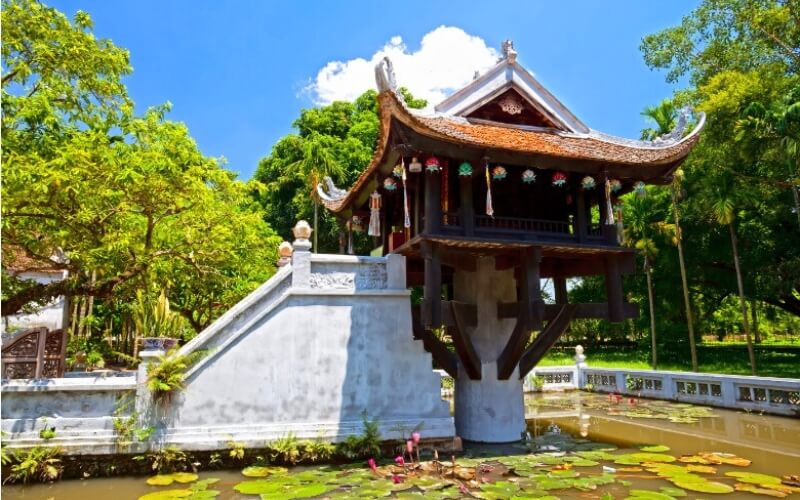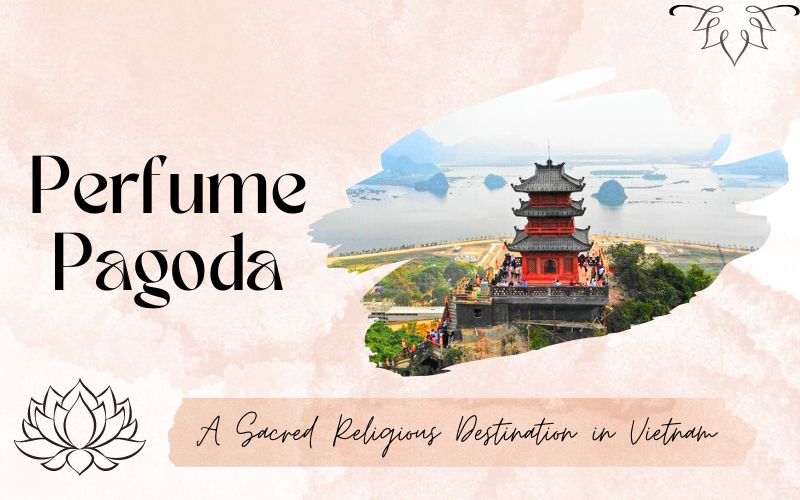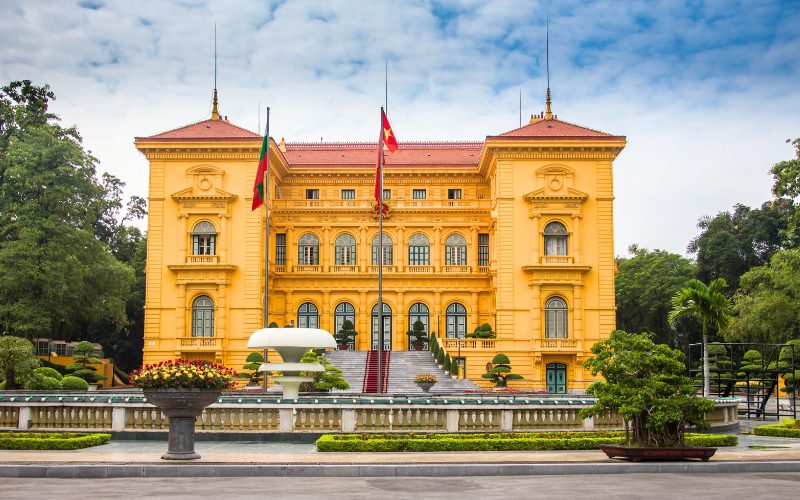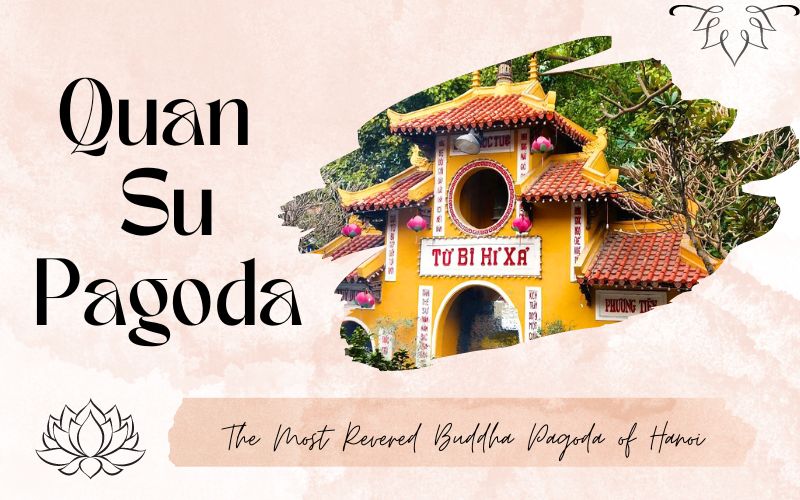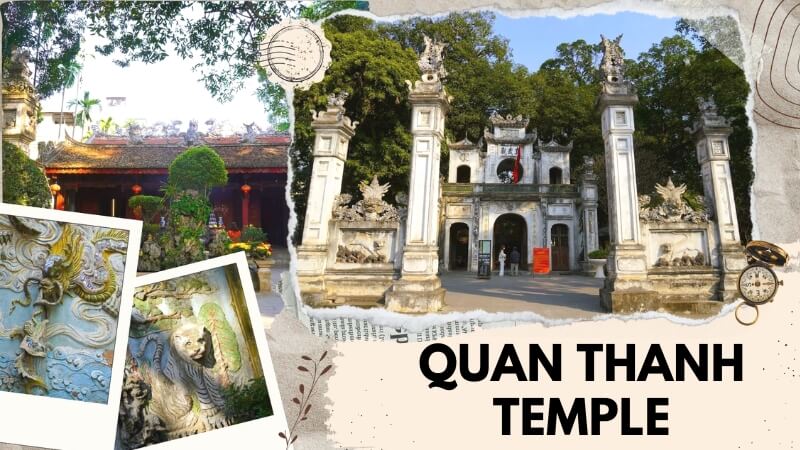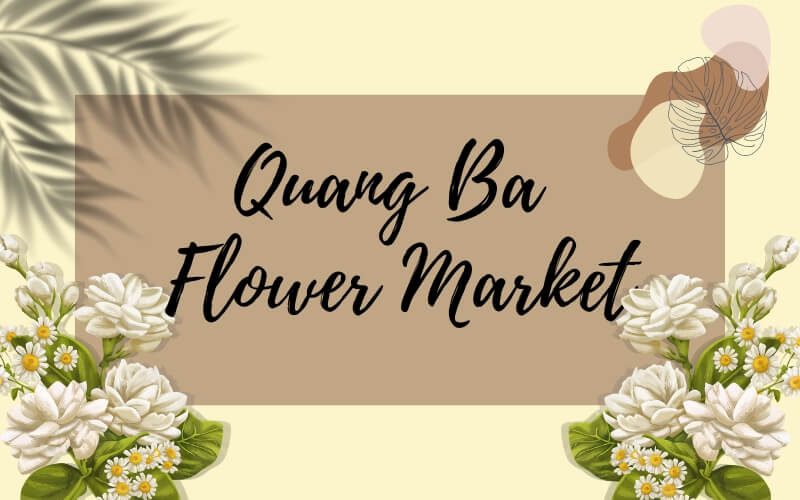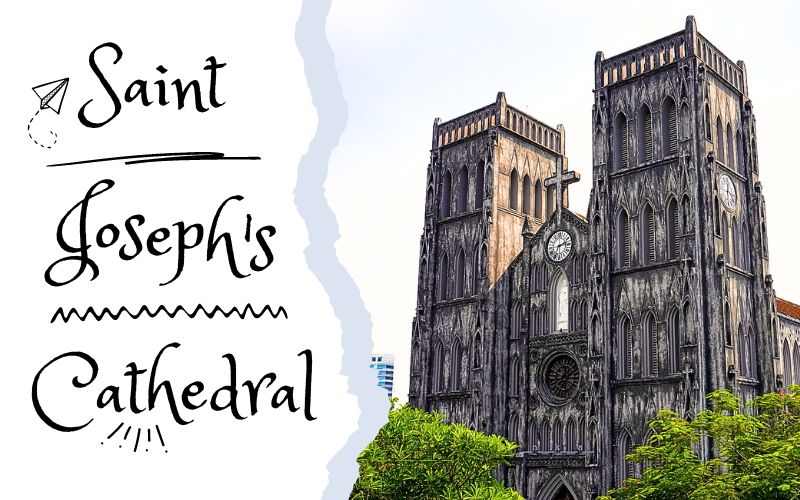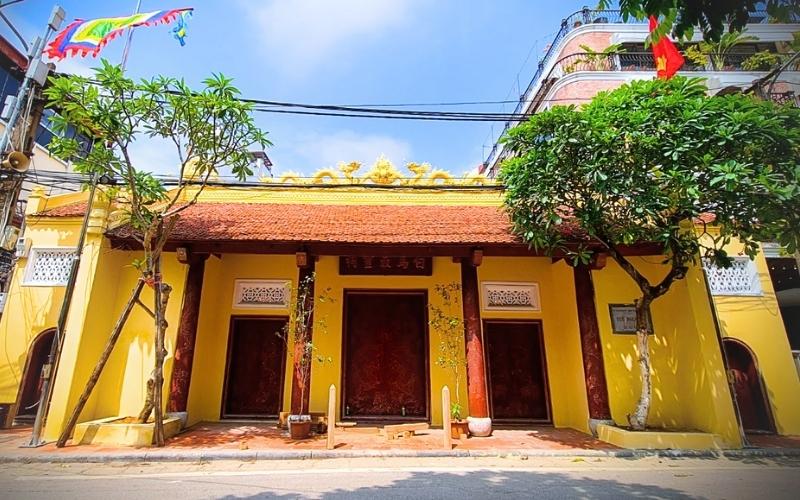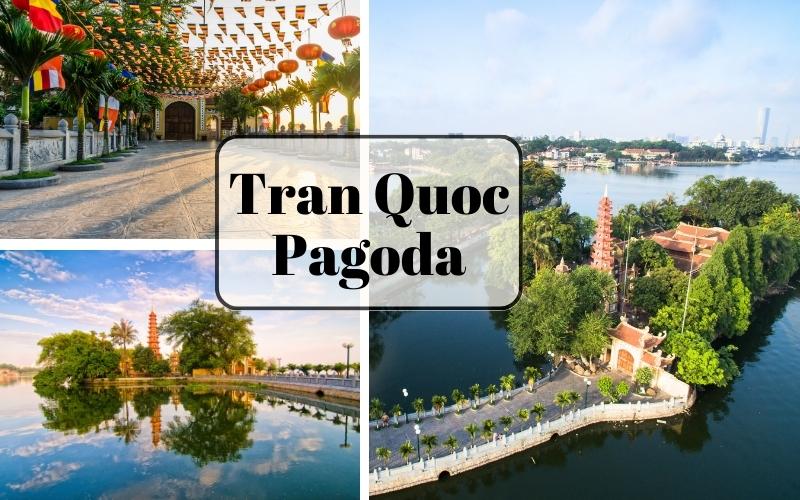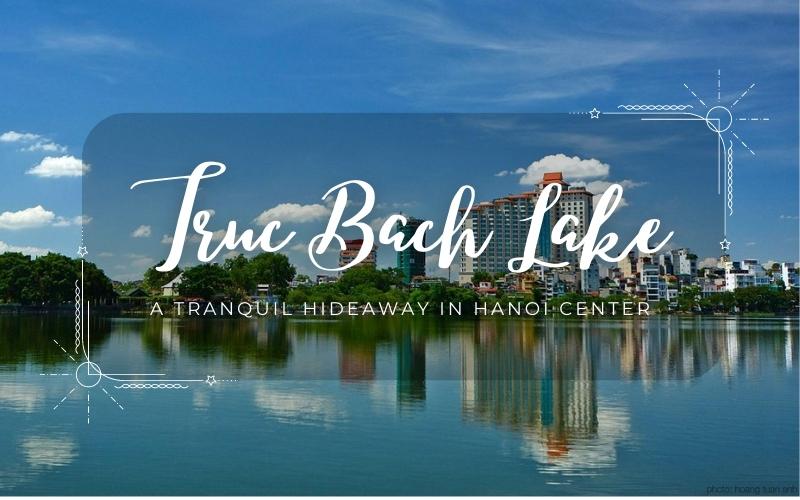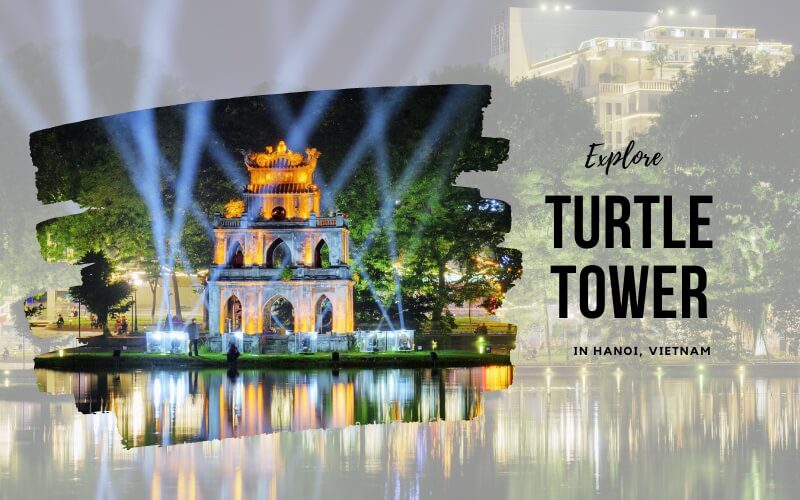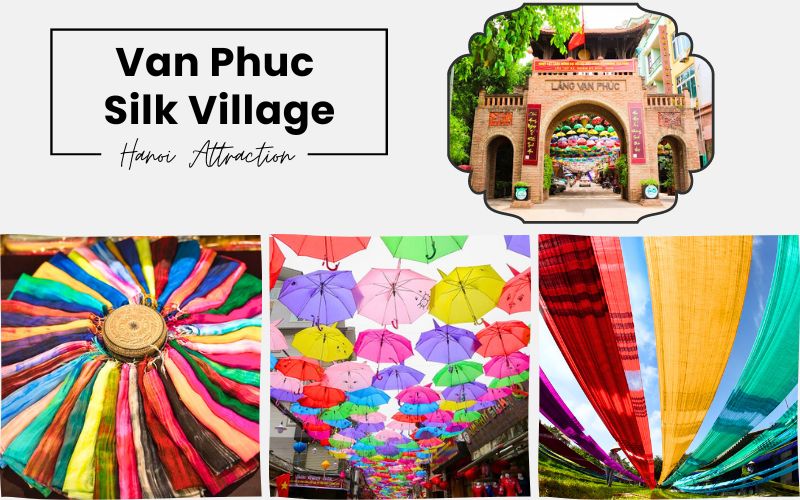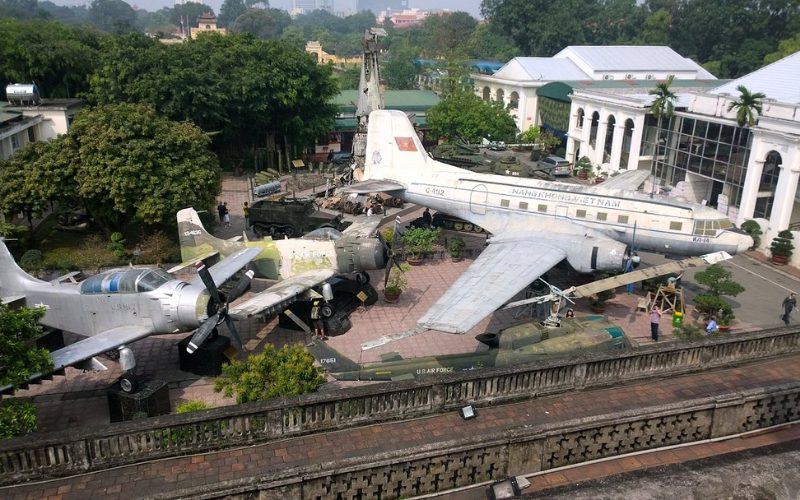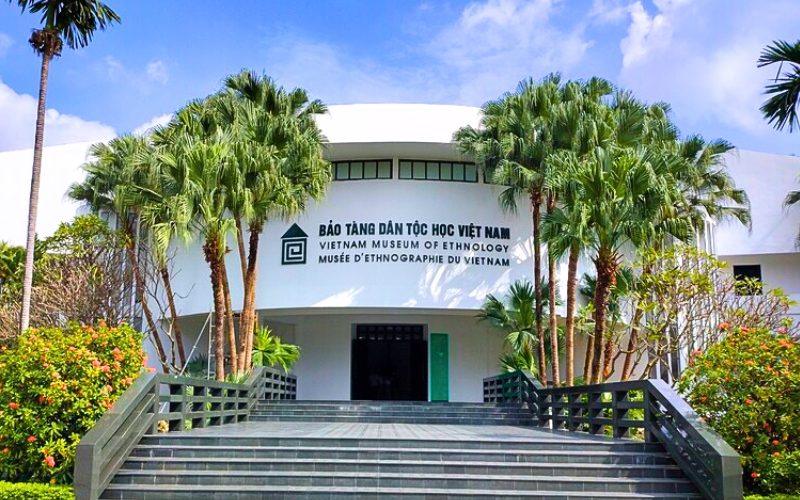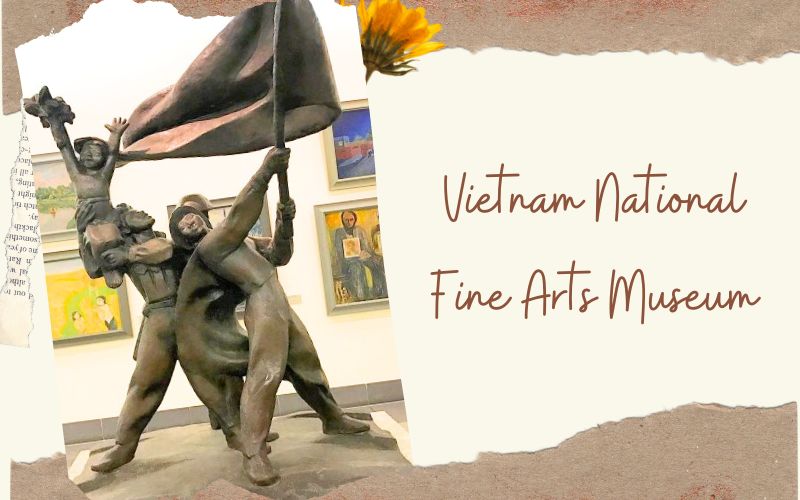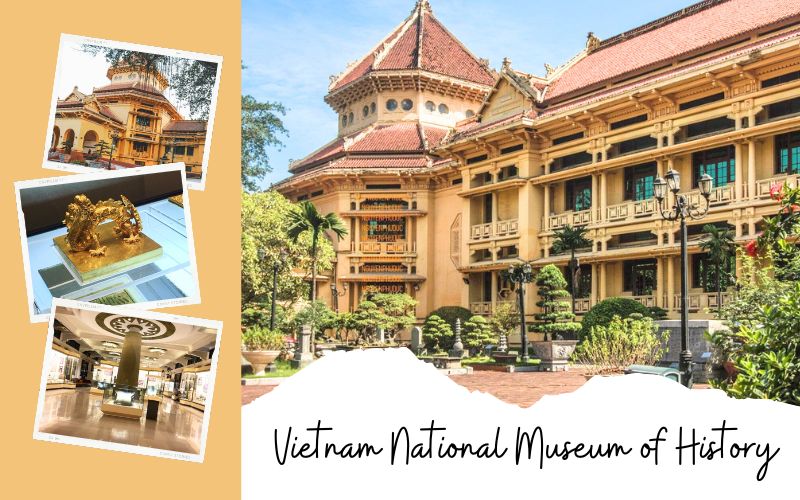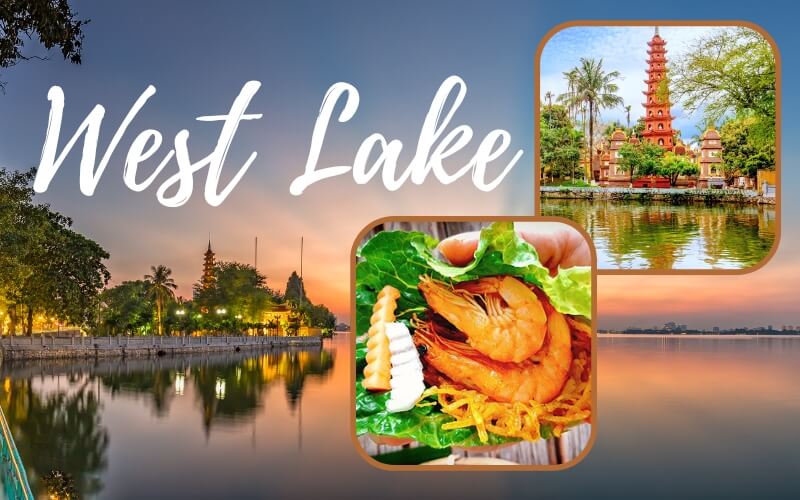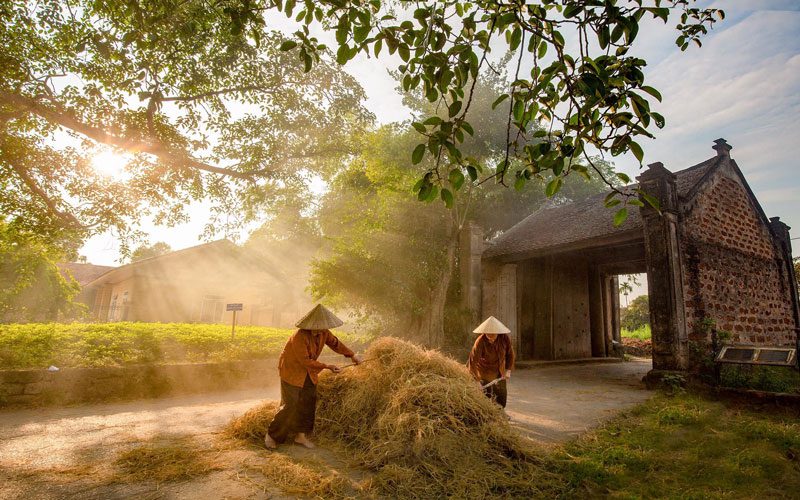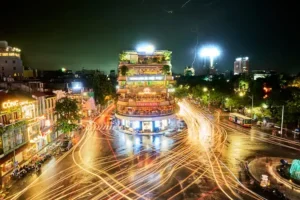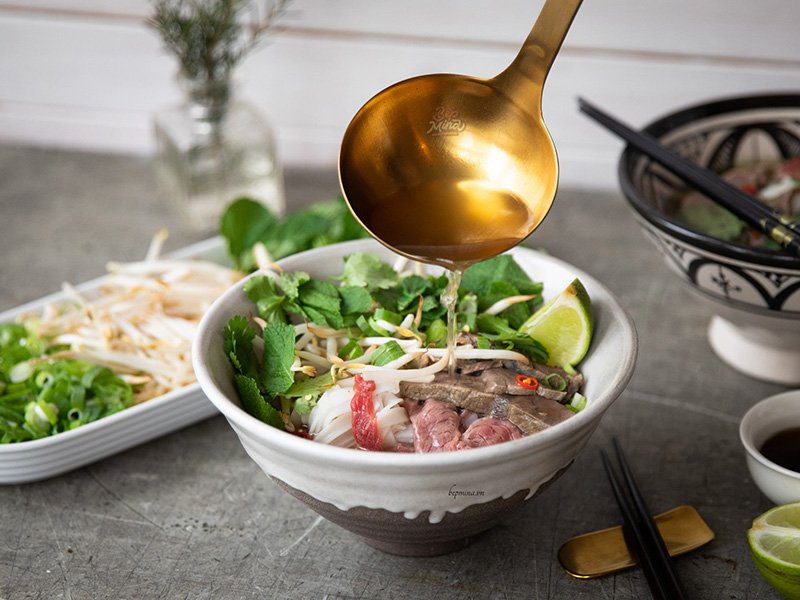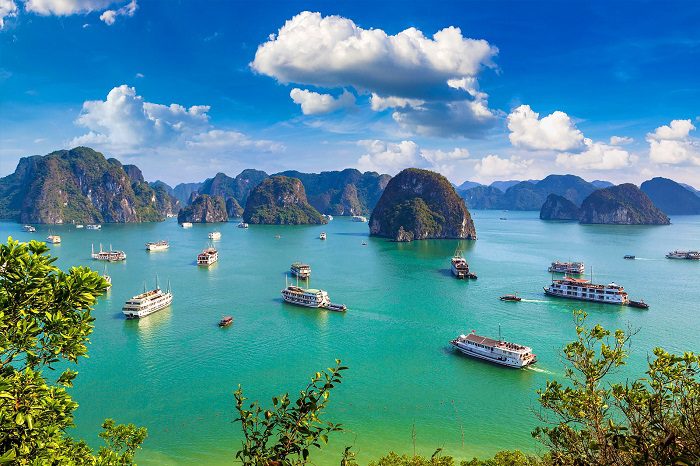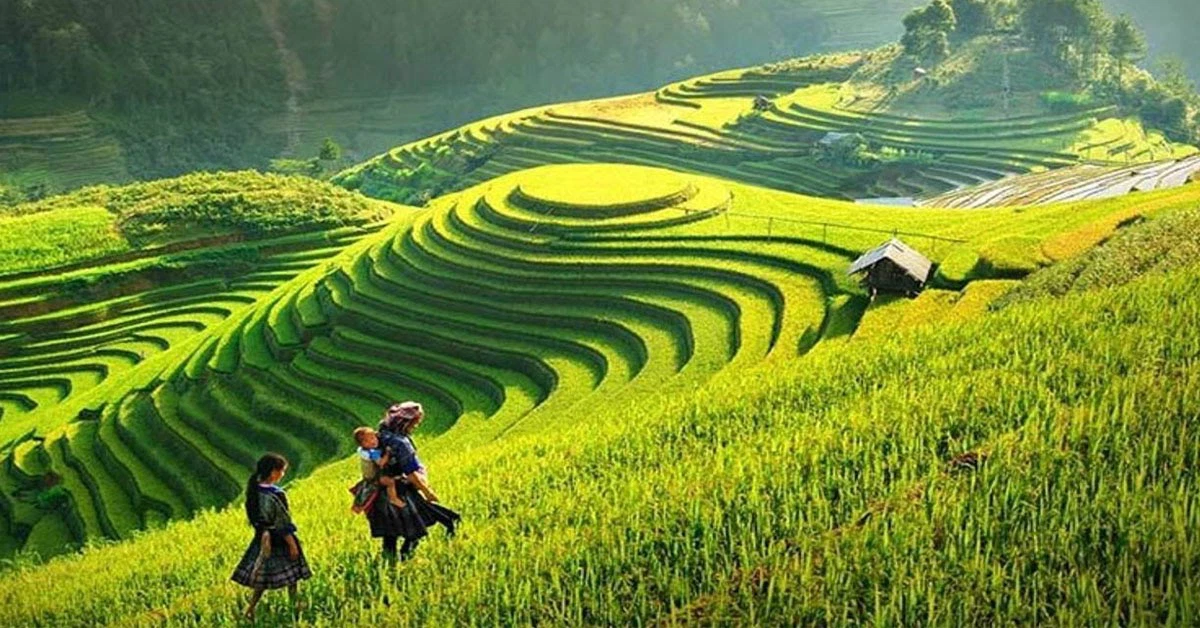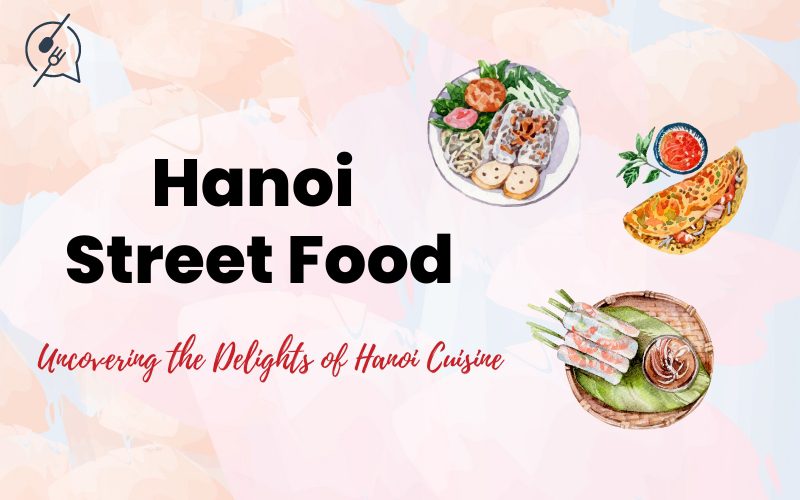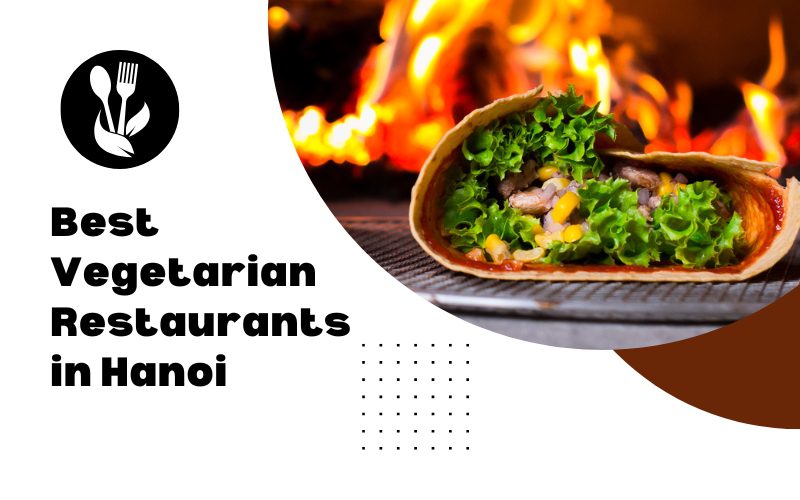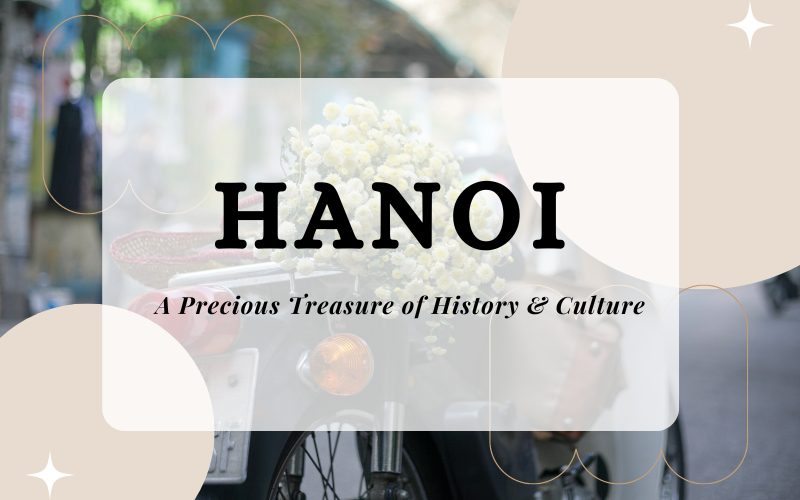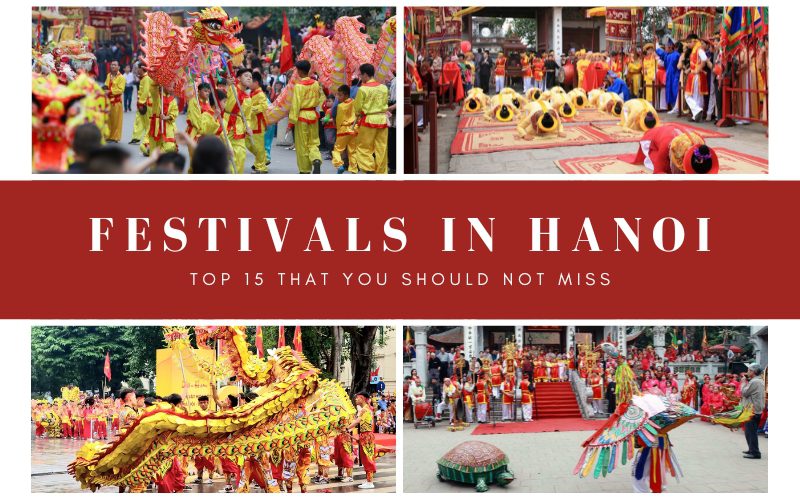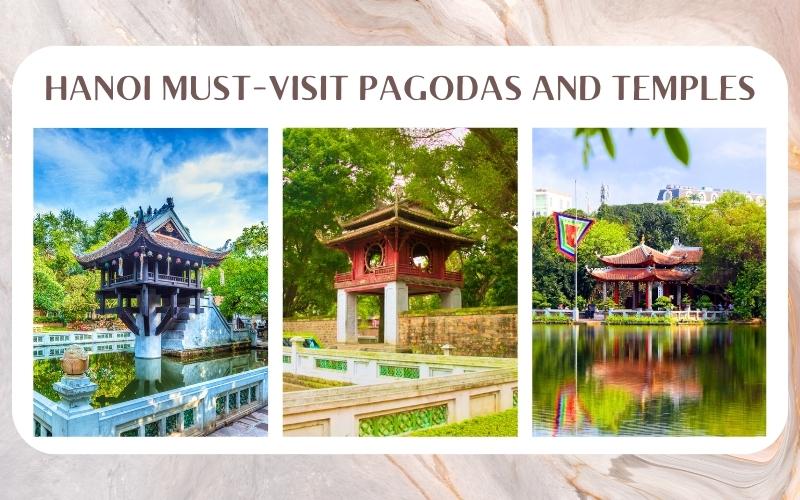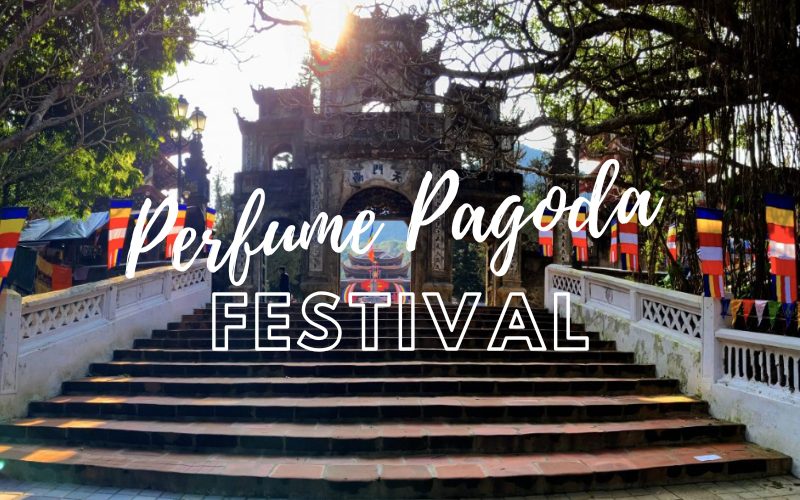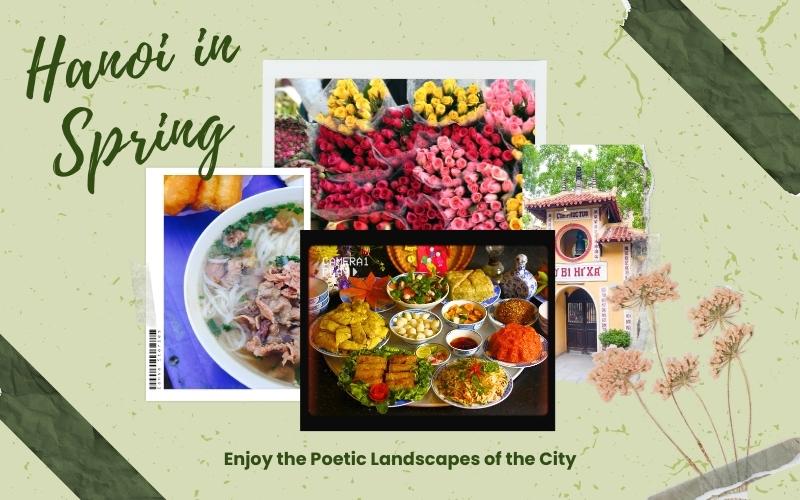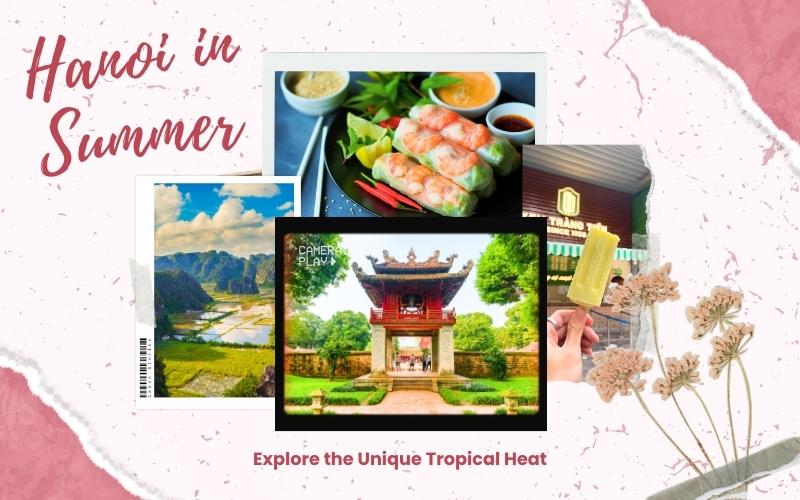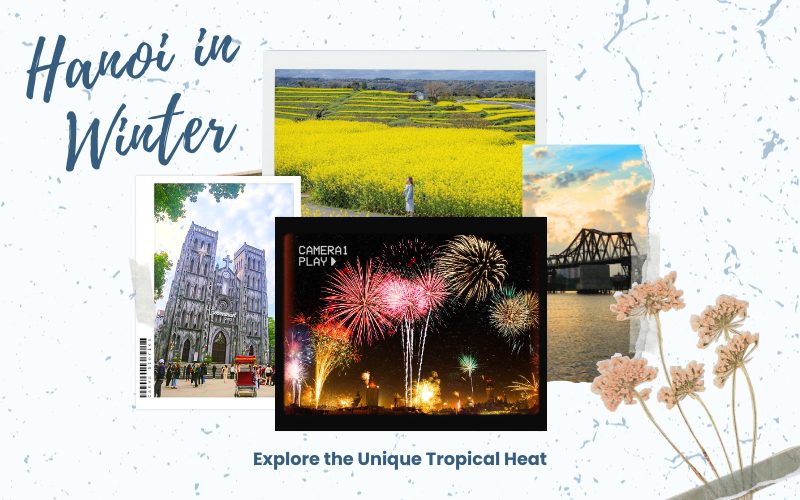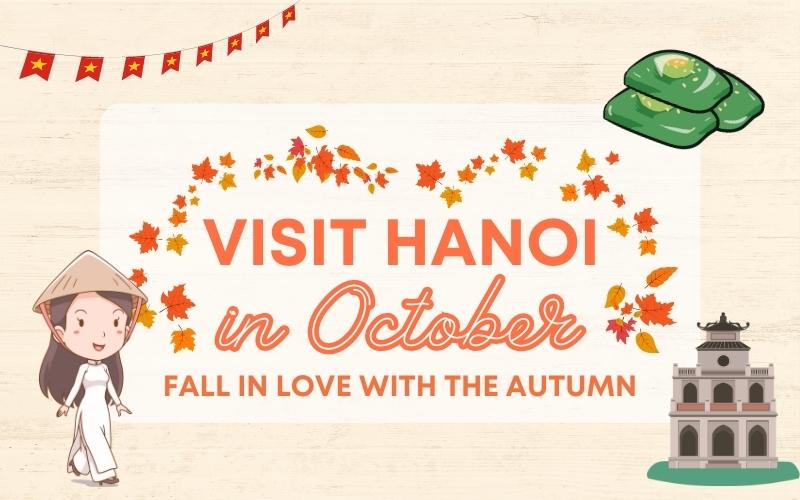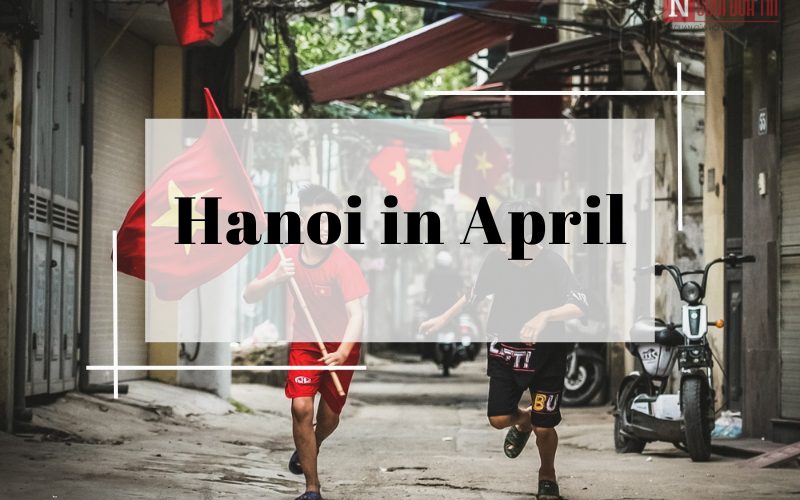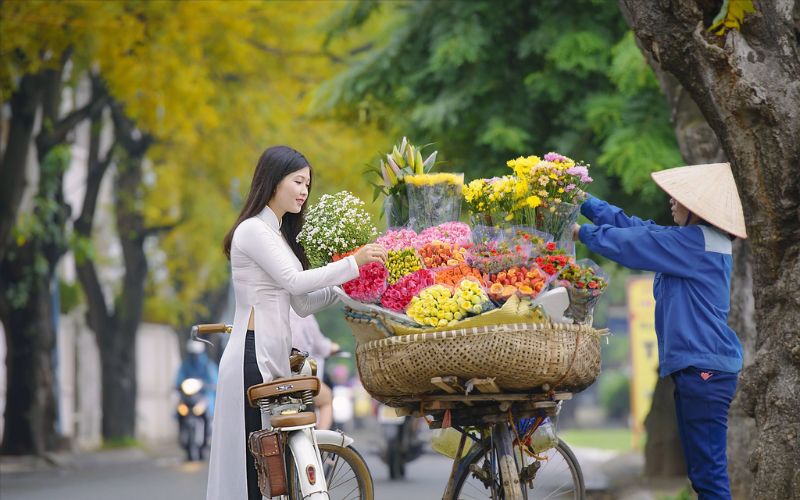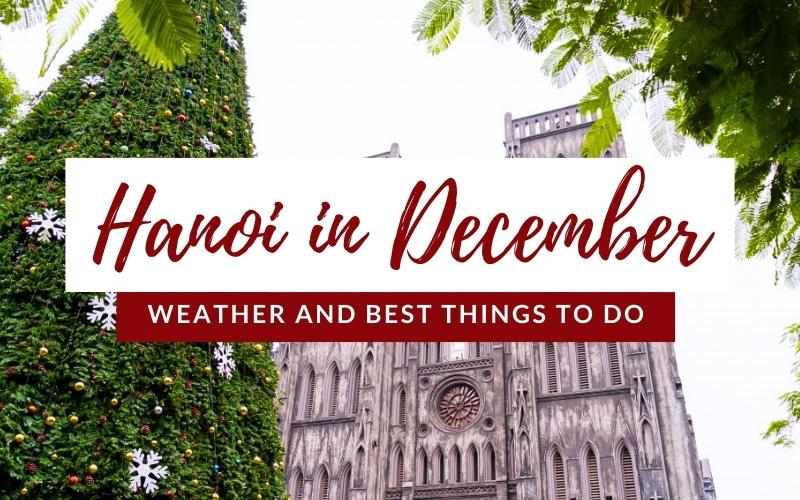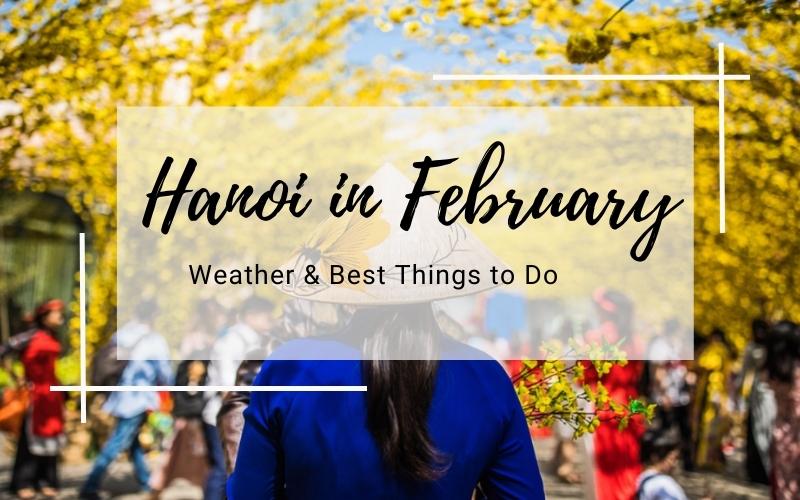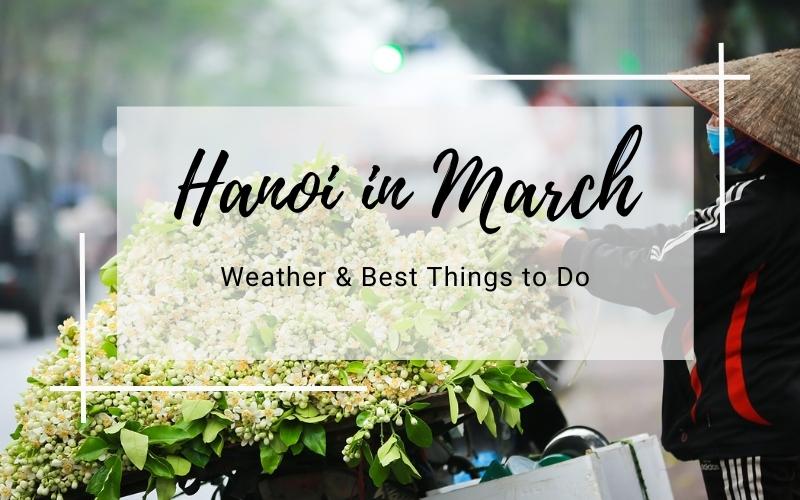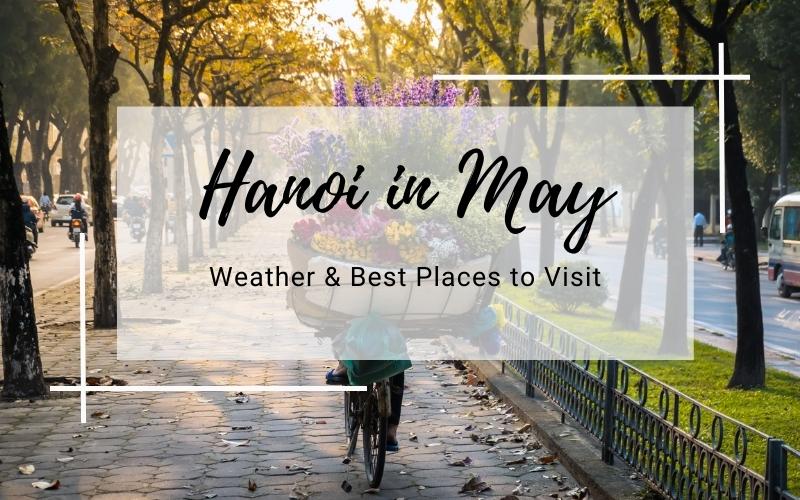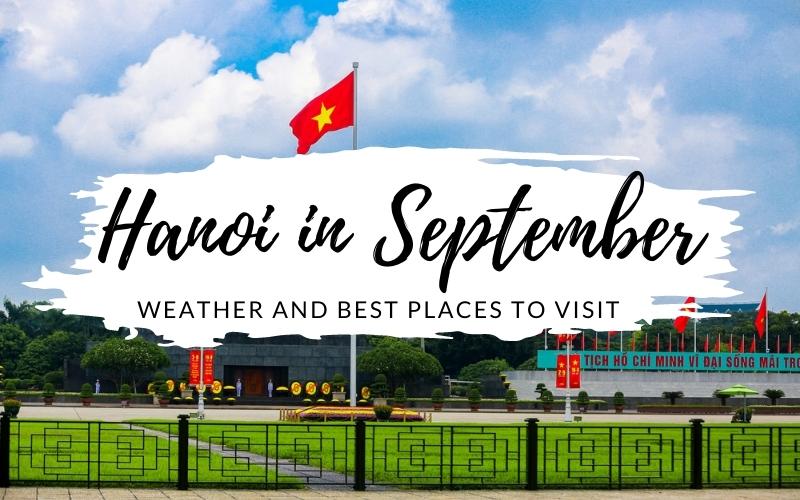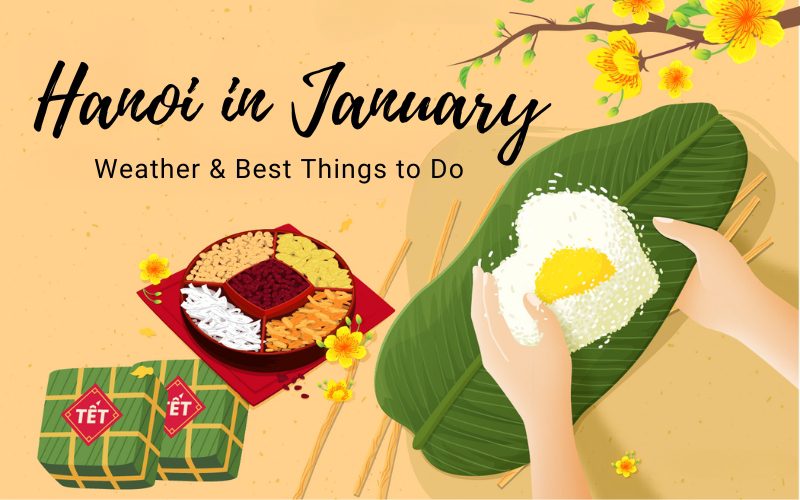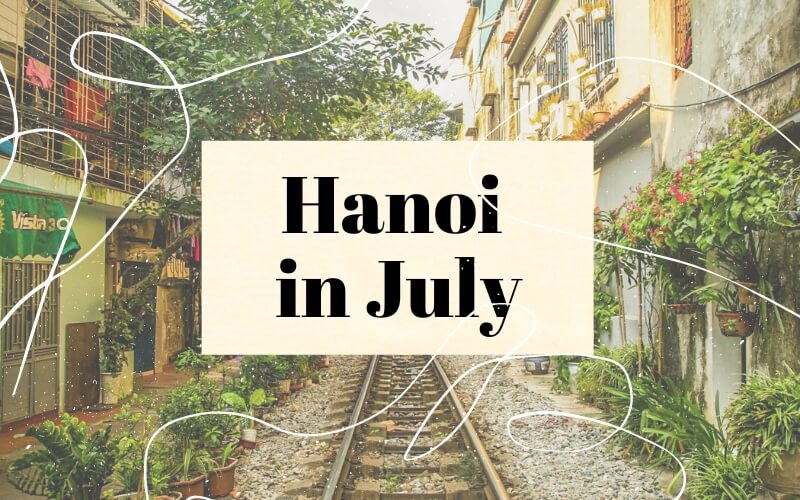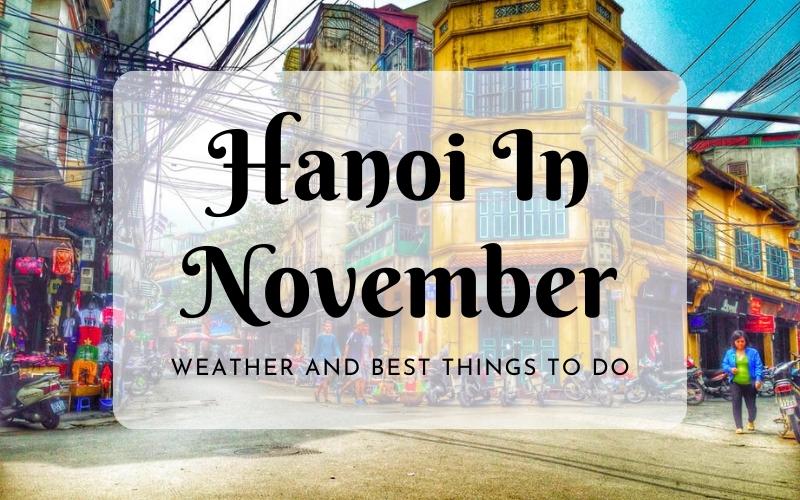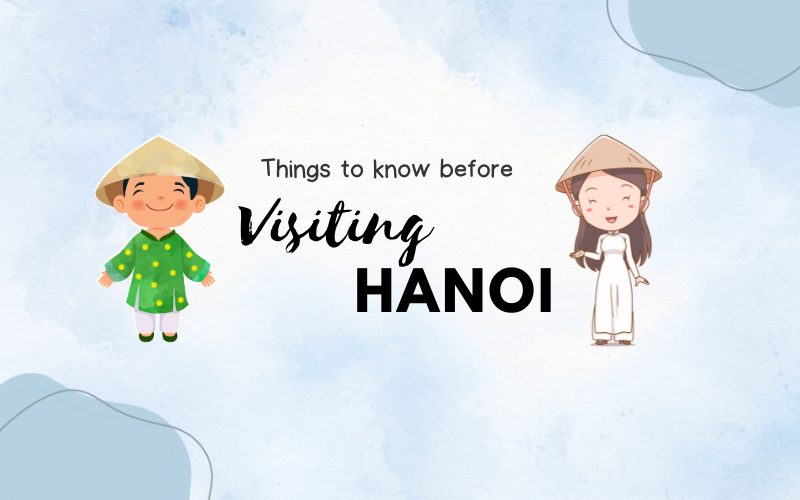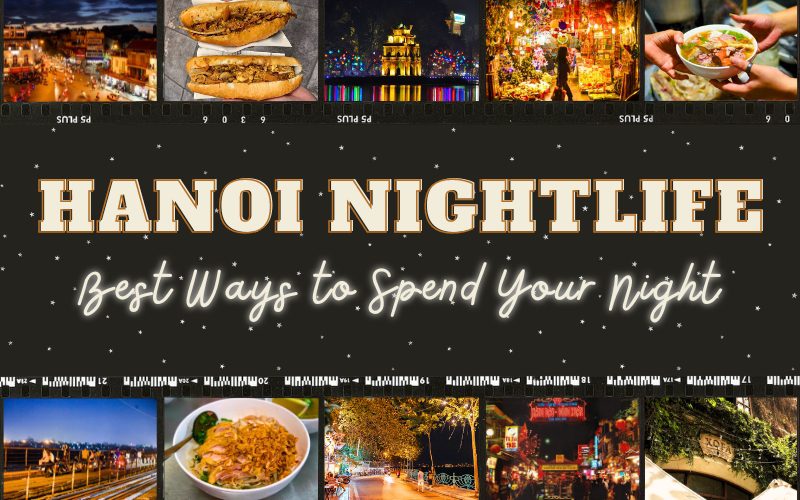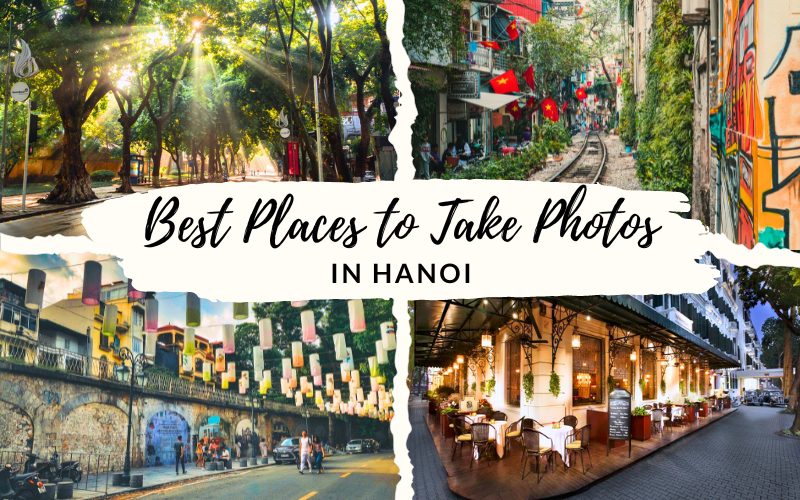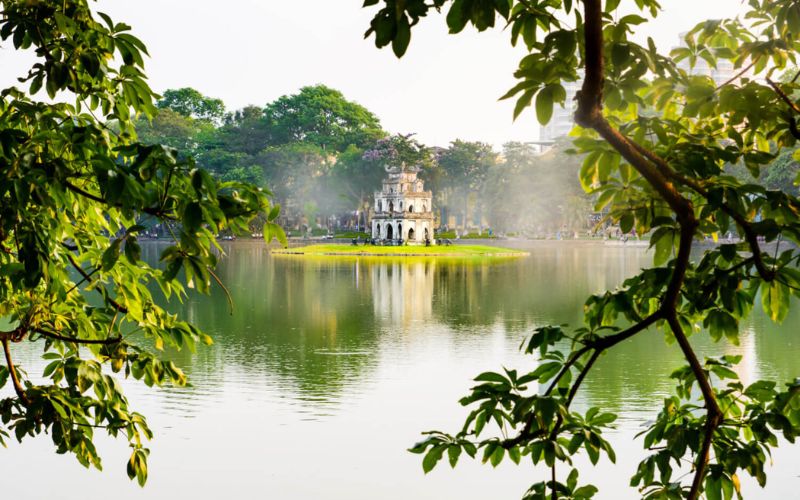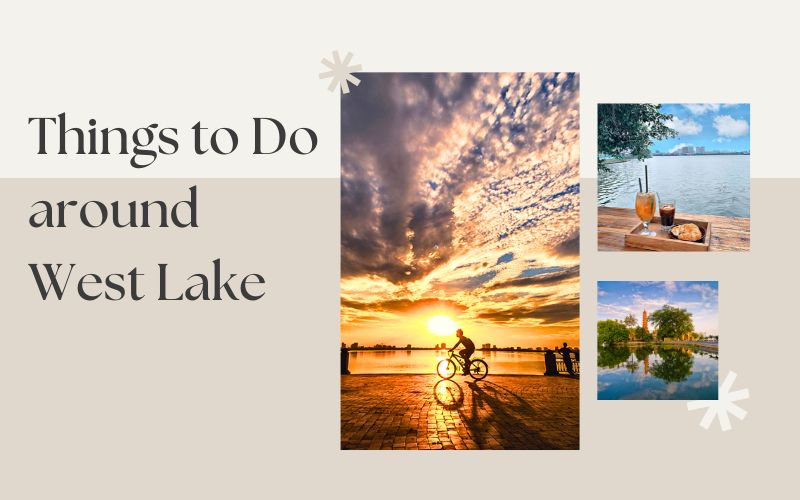In this article, we will provide you with a useful Hanoi travel guide, including information about weather, transportation, accommodation, food, etc.
General Information
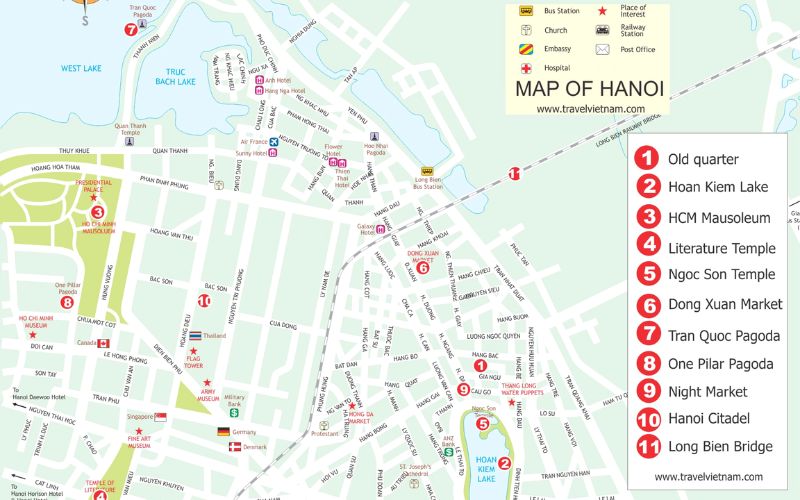
Hanoi Old Quarter map
Hanoi, Vietnam’s capital, is located in the Red River Delta. Hanoi encompasses all aspects of our country’s politics, economy, culture, science, and technology. With a population of more than 8 million in 2022, Hanoi is one of Vietnam’s densest and most populated cities. Its architecture is a blend of traditional styles and French-colonial elements found in ancient homes, public buildings, and religious sites. In comparison to the dynamic Saigon – Ho Chi Minh City, with its bustling streets, luxury metropolitan buildings, and sumptuous nightlife, Hanoi is a small and charming capital. However, Hanoi is a fascinating historical and cultural center that visitors to Vietnam should not miss.
Hanoi is a must-see tourist destination in Vietnam, with a glorious history, a rich culture, and a peaceful and laid-back way of life. In the early morning, you can see Hanoians practicing taichi, playing chess, and walking their dogs around Hoan Kiem Lake. Local delicacies, in particular, will delight your senses and tantalize your taste buds. When visiting Hanoi, you will encounter many sidewalk vendors selling delicious street foods such as pho, bun cha, banh cuon, and banh mi (Vietnamese sandwiches).
Are you planning a trip to this vibrant capital? The information in this article Hanoi travel guide will surely help you.
Weather in Hanoi & Best time to visit
Weather is one of the most important things to keep in mind when traveling to Hanoi. In the article Hanoi travel guide, we will provide you with the most useful information about the weather and climate in Hanoi.
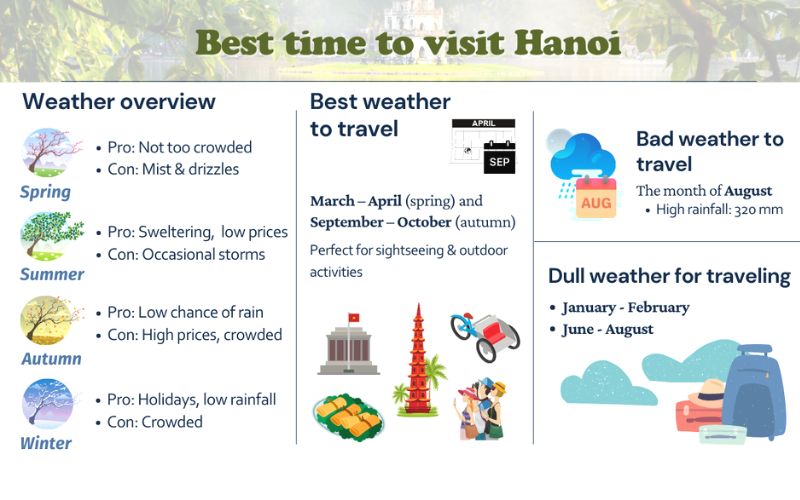
Weather in Hanoi & Best time to visit
Hanoi has four seasons:
- Spring (February to April)
- Summer (May to August)
- Autumn (September to October)
- Winter (November to January).
The weather in Hanoi in the spring is delightful, neither too cold nor too hot. Summer is the hottest season of the year, with temperatures reaching 39 degrees on some days. It is also the rainy season in Northern Vietnam, so expect torrential downpours, especially in the afternoon and evening, which may disrupt your trip if you take sightseeing tours. But don’t worry if you visit Hanoi on rainy days, ‘cause there are many activities to do. You can visit the History Museum, Hoa Lo Prison, St. Joseph’s Cathedral, Hanoi Opera House, etc. Winter in Hanoi is a little colder, with temperatures sometimes dropping below 10 degrees Celsius.
Hanoi has four distinct seasons, every of which has its own feature. The fact is that you can visit Hanoi all year round. According to most of our clients, Autumn is the best time to visit Hanoi because it is cool and windy. The temperature at this time is 25 degrees Celsius on average. This is an excellent time for a street food walking tour or a biking tour around Hanoi.
Getting to Hanoi
By plane
You can take direct flights to Hanoi from major cities in the United States, Europe, Australia, Japan, and other Southeast Asian countries. There are also daily flights to Hanoi from major Vietnamese cities such as Da Nang, Hue, Nha Trang, Da Lat, and Ho Chi Minh City.
The Old Quarter is 30 kilometers from Noi Bai International Airport. To get to the city center, you can take a taxi or a public bus from the airport.
By train
You can take a train from other Vietnam cities (Ho Chi Minh City, Nha Trang, Da Nang, Hue, Quang Binh, Quang Tri, and so on) to Hanoi. Train services are good and they offer many options. Tourists can choose between hard seats or soft seats, with or without air conditioners, etc. when purchasing train tickets. The train ride from Hanoi to Ho Chi Minh City takes between 30 and 42 hours. There is also a tourist train that runs between Hanoi and other capitals like Beijing.
The Hanoi Train Station is located at 120 Le Duan Street in the Hoan Kiem District of Hanoi. It has two main entrances, one on Le Duan Street and one on Tran Quy Cap Street. For foreign tourists, the most popular routes from Hanoi Station are Hanoi – Lao Cai and Hanoi – Hue.
For more information, read our article visa to Vietnam.
Getting around Hanoi
As you know, traffic in Hanoi is quite complicated. Therefore, it’s necessary for visitors to read the Hanoi travel guide on how to move safely and inexpensively.
By road
Since 2000, Vietnam’s road infrastructure has significantly improved. Every day, many buses run between Hanoi and major Vietnamese cities. You can also drive from Hanoi to Vientiane (Laos).
On foot
Hanoi is a small capital so you can explore on foot in one or two days at a leisurely pace. Walking is enjoyable in the Old Quarter, the French Quarter, and West Lake.
However, tourists may experience anxiety when crossing our congested streets. When crossing the street, keep three things in mind: don’t stop, don’t rush, and don’t take a step backward. For many visitors, the traffic in Vietnam is one of the most exciting and impressive aspects of their trip.
Taxi
You can easily find a taxi in Hanoi for your visit due to the popularity of booking apps like Grab, Be, and Gojek. With a smartphone connected to the Internet, you can book a car or a motorbike with a driver at any time of the day. Taxis in Hanoi typically seat 4 to 7 people, so if you are traveling in a large group, it is best to use a Vietnam car rental service.

Grab bike
Xe Om (motorcycle taxi)
If your phone can’t get an Internet connection, don’t worry. There are numerous “xe om” on every street corner of Hanoi. But keep in mind that traveling by motorcycle is both exciting and dangerous. Sometimes you can negotiate the prices before stepping into the vehicle.
By bus
Although there are numerous buses in Hanoi, they may not be as comfortable as those in Western countries. During rush hour, some buses are extremely crowded, making it less convenient for you to travel around the city by bus. However, if you want to save money, this is a great option because each ticket costs only 7000 VND (nearly $0,3).
Hop on – Hop off Hanoi City Tour Bus
More than a bus, the Hop On – Hop Off Hanoi City Tour bus is a great choice. This bus will stop at 15 different locations, allowing you to visit the Hanoi Old Quarter, Hoan Kiem Lake, Ngoc Son Temple, Hoa Lo Prison, Ho Chi Minh Mausoleum, Quan Thanh Temple, West Lake, Temple of Literature, Thang Long Royal Citadel, and Hanoi Opera House. You can choose any destination for your city tour, and the ticket costs only 160,000 VND ($ 6.3).
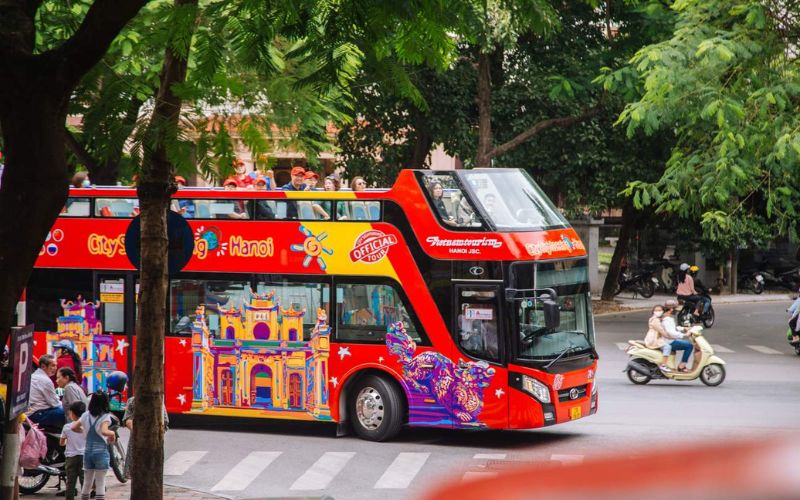
Hop on – Hop off Hanoi City Tour Bus
Private car
Private cars are a popular mode of transportation for international tourists. For safety and personal reasons, you can hire your own car with a trustworthy driver. With a team of professional drivers, we provide not only helpful Hanoi travel guide but also car rental services in Vietnam.
Where to Stay in Hanoi
The great thing about Hanoi is that there is never a shortage of places to stay. There are plenty of great and affordable hostels in Hanoi, as well as many other great options such as traditional homestays, affordable Airbnb, and even high-end hotels and resorts. You won’t be disappointed if you’re looking for a safe place to relax and meet other travelers. There are numerous Rooftop Bars where visitors can relax, enjoy a lively atmosphere, and enjoy the city’s breathtaking views.
We encourage you to book early to get a discounted rate. If you need help with booking, contact us here.
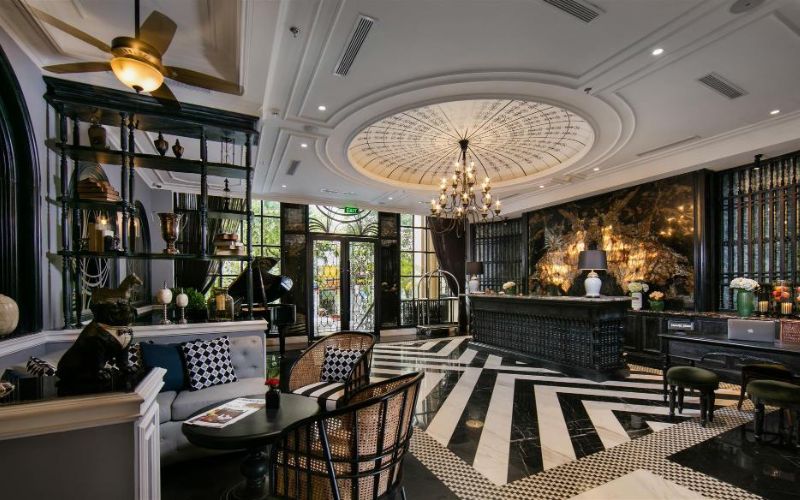
Hanoi la siesta central hotel & spa
Hanoi History and Culture
Hanoi, nestled in the northern part of Vietnam, boasts a history of over 1,000 years, encompassing legendary emperors from the Ly and Tran dynasties to the era of French colonial rule. This city has borne witness to wars, revolutions, and periods of economic growth, making it a living testament to the nation’s past.
Hanoi History
Hanoi’s history dates back more than a millennium, with its origin as the capital of the Dai Viet kingdom. Over time, it has transitioned through various phases, serving as the capital of French Indochina and the Democratic Republic of Vietnam. The city’s architectural landscape echoes its rich history, with a tapestry of ancient temples, pagodas, and elegant French colonial buildings.
Ho Chi Minh Mausoleum stands as a prominent historical landmark, paying homage to the revered Vietnamese leader who led the nation to independence from French colonial rule. This imposing structure houses the embalmed body of Ho Chi Minh and attracts millions of visitors annually.
Another essential historical site is the Temple of Literature, founded in 1070 as Vietnam’s first university and now revered as one of the country’s most culturally significant places. Dedicated to Confucius, the temple honors scholars and intellectuals who have contributed to the nation’s heritage.
Hanoi’s Cultural Heritage
Cultural heritage thrives in Hanoi, with its people deeply proud of their traditions and customs. The city hosts an array of museums and cultural centers showcasing Vietnamese art, music, and literature.
The Vietnam Museum of Ethnology stands out as a renowned museum, dedicated to showcasing the diverse ethnic groups and their unique cultures. Through exhibits of traditional clothing, customs, architecture, and performances of music and dance, visitors can gain insight into Vietnam’s rich cultural tapestry.
In the heart of the city lies the bustling Old Quarter, a maze of narrow streets and alleyways brimming with traditional shops and markets. It offers an immersive experience of Hanoi’s vibrant street life and is a gastronomic haven, featuring renowned street foods like pho and banh mi. The Old Quarter serves as a living embodiment of the city’s cultural vibrancy.
As we traverse Hanoi’s historical and cultural landscapes, we unravel the threads of its captivating past and present, understanding the essence of this enchanting city and its profound significance in Vietnam’s rich history and heritage.
Best Places to Visit in Hanoi
Inside the City
Hoan Kiem Lake
Hoan Kiem Lake must be one of the most popular tourist destinations recommended by any Hanoi travel guide. Located in the heart of Hanoi, it is regarded as the city’s heart and a symbol. This lake is surrounded by many beautiful Old Quarter streets. Hoan Kiem means “returned sword,” and the lake is associated with a legend in which King Le Loi was given a magical sword by God, which he used to defeat Chinese invaders. Following the victory, Le Loi was boating out on the lake when the Golden Turtle God appeared and asked the king to return the valuable sword.
Around the lake, different places of local life can be found at different times. This is a lovely place that is both bustling and peaceful, so there are always visitors at all hours of the day. There are many historical sites and delicious cuisines for you to explore.
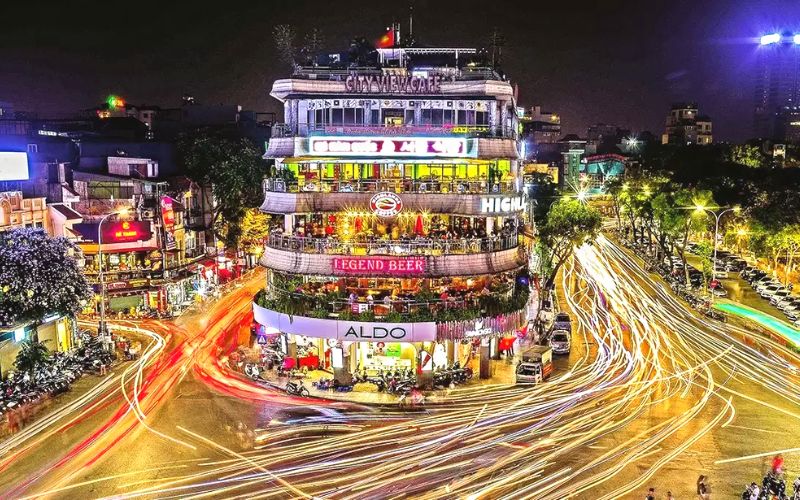
Hoan Kiem Lake by night
Hanoi Old Quarter
This is a one-of-a-kind Hanoi location where traditional architectural houses and streets can be found while also appreciating traditional arts and crafts. Hang Bac (Silver Street), Hang Dao (Silk Street), Hang Duong (Sugar Street), and Hang Da (Leather Street) are some Old Quarter streets that are most familiar to tourists.
Every weekend, from 6 p.m. on Friday to 12 p.m. on Sunday, all vehicles are prohibited in the vicinity of Hoan Kiem Lake and certain areas of the Old Quarter. You can spend some time shopping at a night market and or have a street artist draw your portrait.
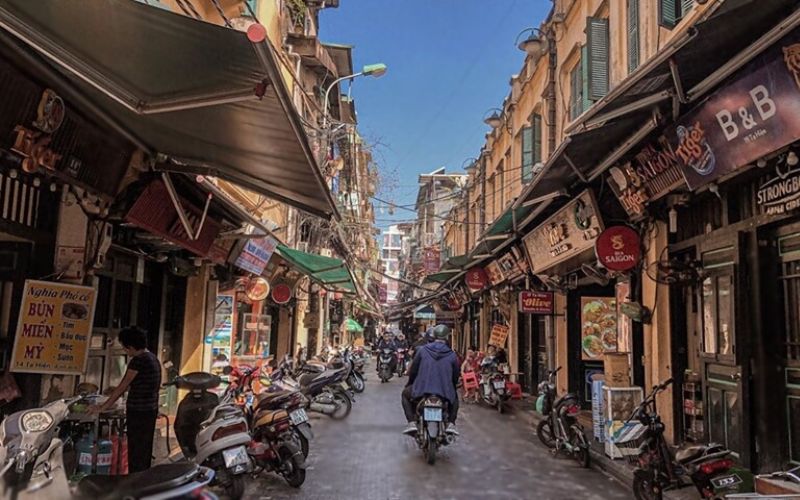
Hanoi Old Quarter
West Lake
West Lake is the city’s largest natural lake. The lake is more than 500 hectares in size and has an 18-kilometer perimeter. This lake is located in Hanoi’s northwestern central district. You can rent a bicycle and ride around the lake, taking stunning photos of the sunrises and sunsets. Around the lake, there are numerous cultural and historical tourist attractions, such as Tran Quoc Pagoda, Nhat Tan Peach Garden, and Quan Thanh Temple.
Ho Chi Minh Mausoleum
Ho Chi Minh Mausoleum, located on Hung Vuong Street in Ba Dinh District, is the final resting place of Vietnamese revolutionary leader Ho Chi Minh. This mausoleum was built with the most valuable materials from all over our country to express the Vietnamese people’s gratitude to Uncle Ho. You can visit the Presidential Palace, a fish pond, and Ho Chi Minh’s stilt house after entering the mausoleum. Visitors must observe strict dress and attitude rules, and they must remain silent in this location. Keep in mind that this location is closed on Mondays and Fridays.
Hoa Lo Prison
Hoa Lo Prison was a Hanoi prison used for political prisoners by French colonists in Indochina, and later by North Vietnam for US prisoners of war during the Vietnam War. During this later period, American POWs referred to it as the “Hanoi Hilton.” This prison is a must-see in Hanoi for anyone interested in the history of the Vietnam War.
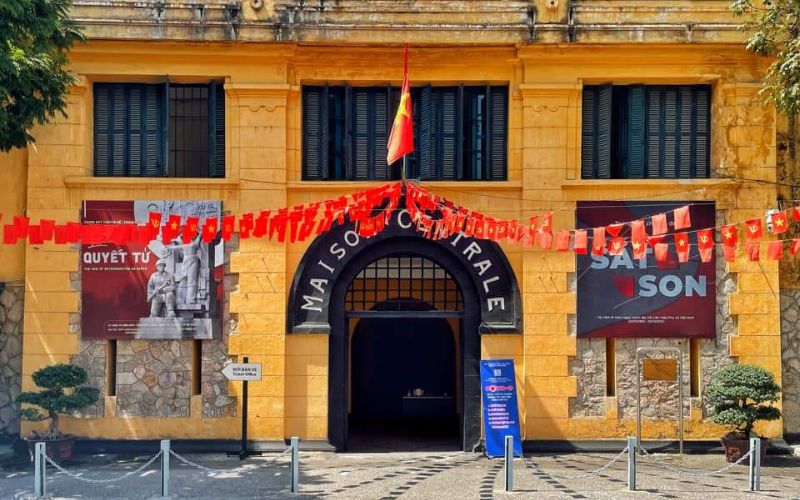
Hỏa Lò Prison
One Pillar Pagoda (Chua Mot Cot)
The One Pillar Pagoda, near Ba Dinh Square, is a one-of-a-kind ancient Buddhist pagoda in Hanoi. Emperor Ly Thai Tong built it in 1049 and Emperor Ly Nhan Tong renovated it in 1105. The One Pillar Pagoda was built on a single stone pillar that resembles a lotus blossom, a Buddhist symbol of purity.
Temple of Literature
Van Mieu and Quoc Tu Giam comprise the Temple of Literature. Van Mieu is a place of worship for Confucius and Chu Van An. Quoc Tu Giam was considered Vietnam’s first university, first for the offspring of loyal families and then for talents from across the country. Today, Van Mieu – Quoc Tu Giam is a popular tourist destination in Hanoi, and it is where students with outstanding achievements are awarded merit certificates.
Tran Quoc Pagoda
Tran Quoc Pagoda, which resembles a blooming lotus flower, was built in the sixth century during the reign of Emperor Ly Nam De (544-548). The pagoda is situated on the West Lake’s western peninsula.
Dong Xuan Market
This is one of Hanoi’s largest markets, where you can find any souvenirs. Dong Xuan Market also offers a variety of delectable street foods.
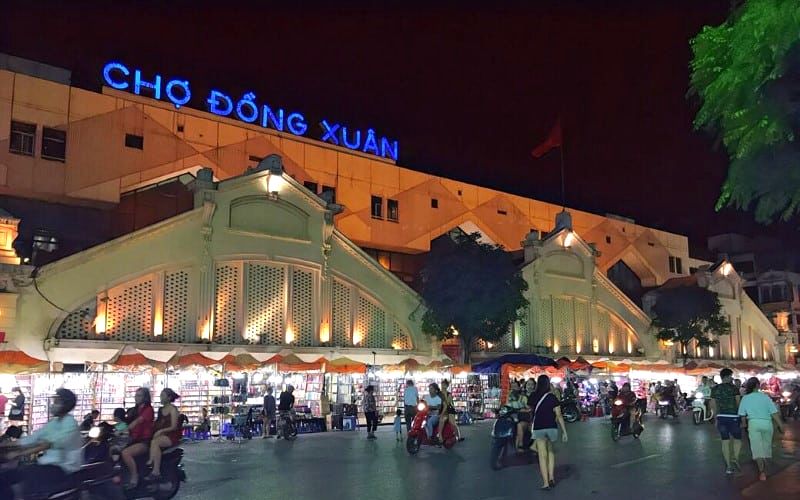
Dong Xuan Market
Long Bien Bridge
Long Bien Bridge, designed by Gustave Eiffel, who also designed the famous Eiffel Tower, is a “historical witness” to the Second World War. During the colonial period, the French built it to speed up the delivery of goods to France.
Imperial Citadel of Thang Long
Thang Long Imperial Citadel is a complex of architectural buildings constructed by many feudal dynasties: from Ly Dynasty (1010) until Nguyen Dynasty. Among this site’s structures, Hanoi Flag Tower which was constructed in 1812 is a must-see place you can get a magnificent view of Ho Chi Minh Mausoleum.
St. Joseph’s Cathedral
St. Joseph’s Cathedral (Nha Tho Lon) is one of Hanoi’s oldest colonial buildings, located in the heart of the Old Quarter, west of Hoan Kiem Lake.
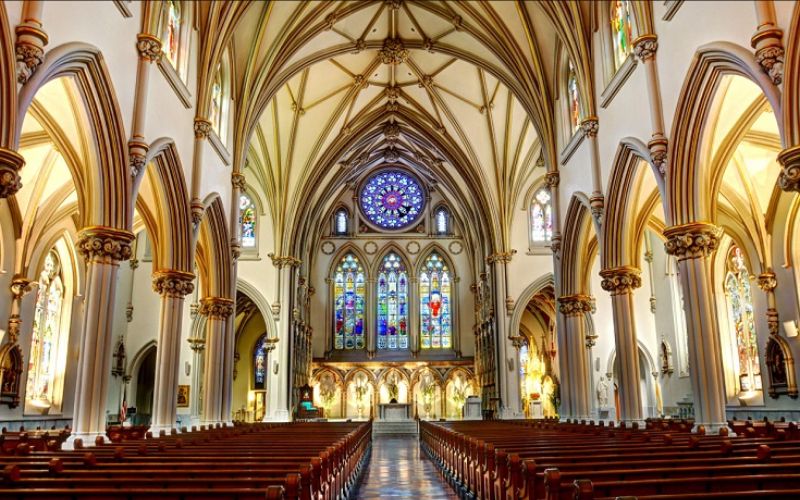
St. Joseph’s Cathedral
Hanoi Opera House
The Hanoi Opera House is a large monument designed by two French architects, Harley and Broyer, in the heart of Hanoi. Its construction began on June 7, 1901, and was finished in 1911.
Vietnam National History Museum
It is in the Hoan Kiem District. More than 200,000 antiques from prehistory to the August 1945 Revolution and the establishment of the Democratic Republic of Vietnam are on display at this museum.
Nearby Attractions
Duong Lam Ancient Village
Duong Lam Ancient Village is located in Son Tay town, which is 50 kilometers west of Hanoi. With its unique architectural features of an ancient village in the Red River Delta, Duong Lam Ancient Village is ranked among Vietnam’s most beautiful ancient villages, just after Hoi An Old Town and the Old Quarter in Hanoi in terms of size and value.
Bat Trang Ceramic Village
Bat Trang Ceramic Village is located approximately 16 kilometers southeast of Hanoi’s city center. Bat Trang is one of Vietnam’s most famous traditional handicraft villages, with a history dating back more than 1,000 years. Because of their beauty, shape, and craftsmanship, Bat Trang ceramic products are priceless. A half-day Hanoi and Bat Trang village tour allows you to participate in the manufacturing of ceramic products.
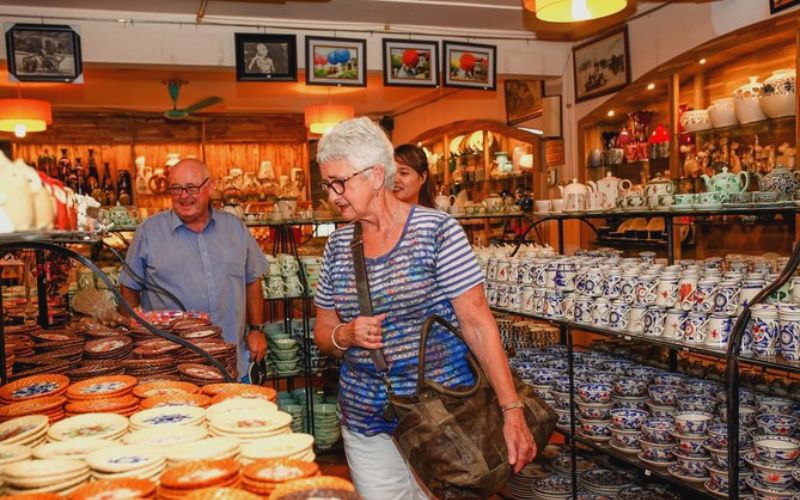
Bat Trang Ceramic Village
Things to Do in Hanoi
Take a cycle rickshaw ride (xich lo)
A cycle rickshaw ride around Hoan Kiem Lake is a fun activity to do while visiting the city. This is the time to relax and reflect on local life and the beautiful landscapes of the Old Quarter’s bustling streets.
Walk around the Old Quarter
You do not visit Vietnam unless you visit the Old Quarter. It is a synthesis of our city’s bustling and ancient aspects. Walking around this area, you can find numerous local merchants selling souvenirs, eating delicious street foods, and interacting with the friendly locals.
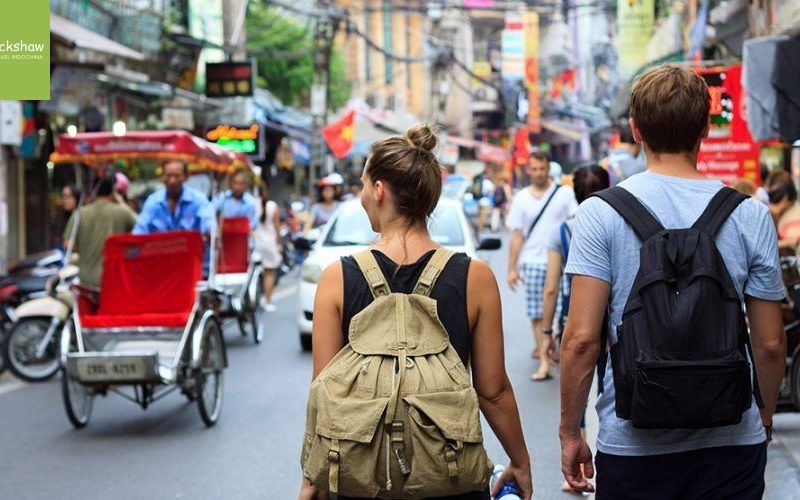
Walking around Old Quarter
Watch water puppet shows
Water puppetry is a vibrant and intriguing art form. This art dates back to the 11th century in some villages in northern Vietnam’s Red River Delta region. Lacquered wood is used to make Vietnamese water puppets. The shows are held in a pool or a lake. Puppeteers, who are usually hidden behind a screen, direct the puppets. The Vietnam Museum of Ethnology and Thang Long Water Puppet Theater on 57 Dinh Tien Hoang Street are two of the most popular places in Hanoi to see a water puppet show.
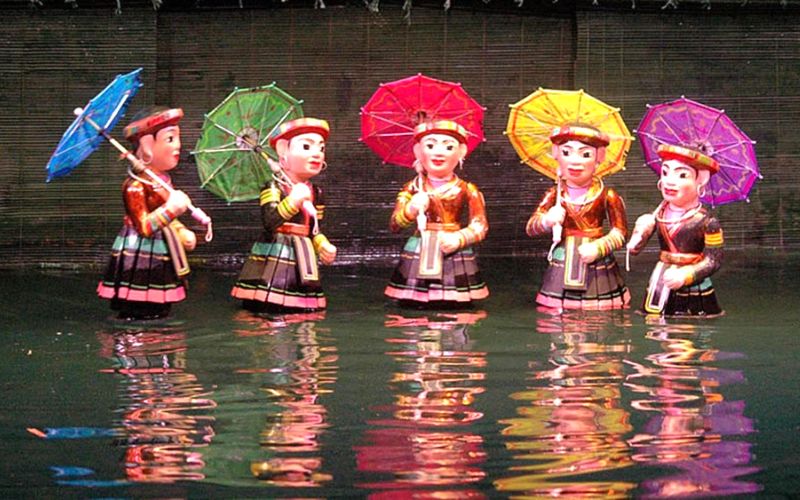
Water puppet shows
Visit a local market
Dong Xuan Market is Hanoi’s largest and most famous tourist market. Many items, such as souvenirs, foods, and clothing, are available in a variety of designs, colors, and materials. Another type of market to visit is Hanoi’s night market. If you want to buy something, you should bargain a little because the price offered is often higher than the actual price. These markets are extremely crowded, so keep an eye on your belongings.
Make craft products
It would be very interesting if you could participate in the process of making traditional crafts, such as pottery in Bat Trang. A visit to the traditional villages can take anywhere from half a day to a full day.
Massage
A foot or body massage is an excellent way to relax after a long flight. Vietnamese massage, influenced by Chinese massage methods, employs natural herbs and focuses on kneading.
Take a food tour
Hanoi’s street food culture is well-known. Street foods are available on every street corner and vary in flavor and price.
Activities for children
Don’t worry if you’re traveling with children; Hanoi has several options. Your kids will have the opportunity to make traditional To He toys. To He is a traditional Vietnamese toy made from glutinous rice powder to create colorful little toys such as famous cartoon characters or objects such as cars, birds, and flowers, among other things. Your children can also participate in a cooking class in Hanoi and learn some local recipes to try at home.
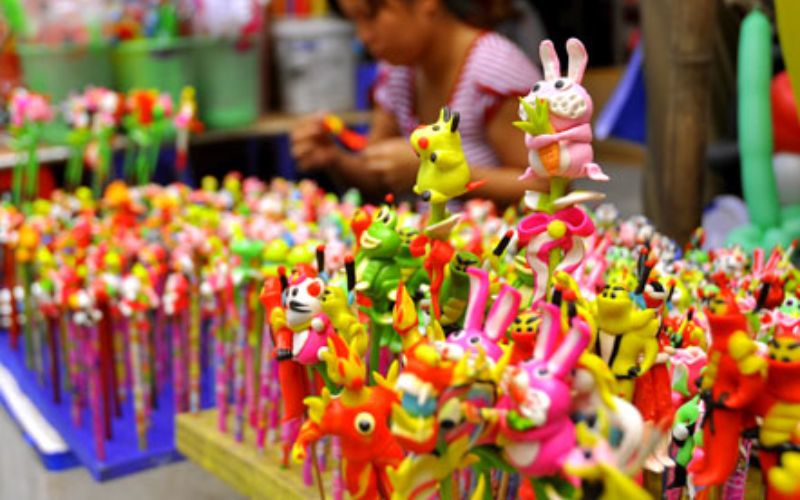
Colorful traditional To He toys
What to Eat in Hanoi
Pho
When visiting Hanoi, Pho is a must-try dish. It is the most well-known Vietnamese dish among international tourists and a specialty of many Vietnamese restaurants worldwide. Pho is also a dish that appears in important international conferences. Pho in Hanoi is the best in Vietnam, with rich broth, juicy sliced beef or chicken, and thick rice noodles.
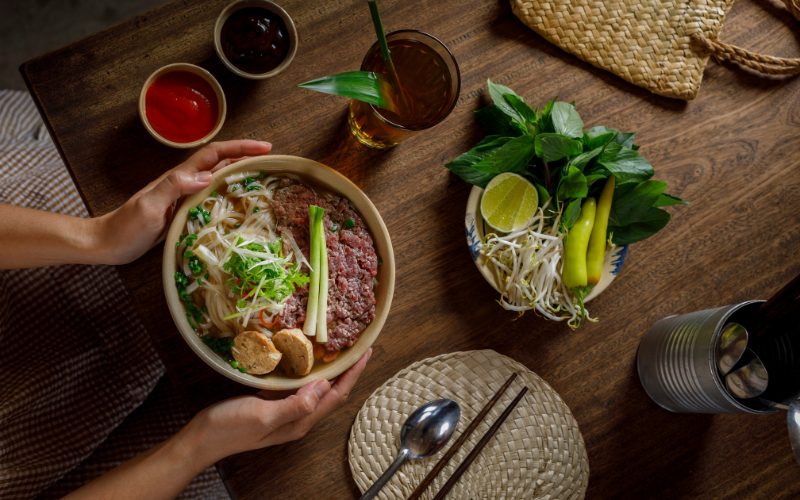
Pho
Cha ca (Fried fish)
Cha Ca is a fish and flour mixture. Cha Ca is traditionally served with baked bread, noodles, coriander, basil, fresh onion, and shrimp sauce. Fresh lemon, pepper, a little oil, a few drops of white wine, water, and sugar are used to make the shrimp sauce.
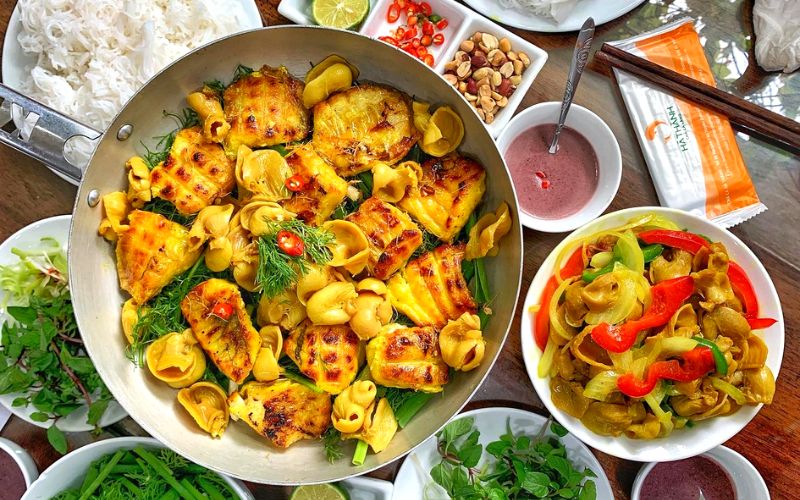
Cha ca La Vong
Bun cha (vermicelli with grilled pork)
Bun Cha is a popular Hanoi dish among tourists. The spicy grilled pork is served with rice vermicelli, sweet and sour fish sauce, lemon juice, vinegar, garlic, a pinch of pepper, and pepper mixed with small pieces of green papaya. Former President Barack Obama used to eat this dish at a small restaurant in Hanoi while visiting with his family. Bun cha was greatly appreciated and praised by him.
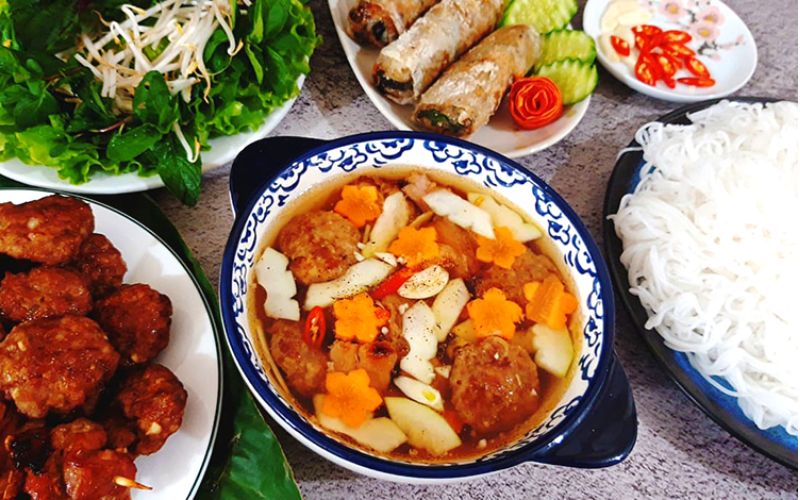
Bun Cha
Banh cuon (steamed rice pancake)
Banh Cuon is thin steamed rice flour pancakes stuffed with minced pork and mushrooms and served with a dipping sauce, fried shallots, and fresh herbs. Banh cuon is commonly consumed for breakfast or in the evening.
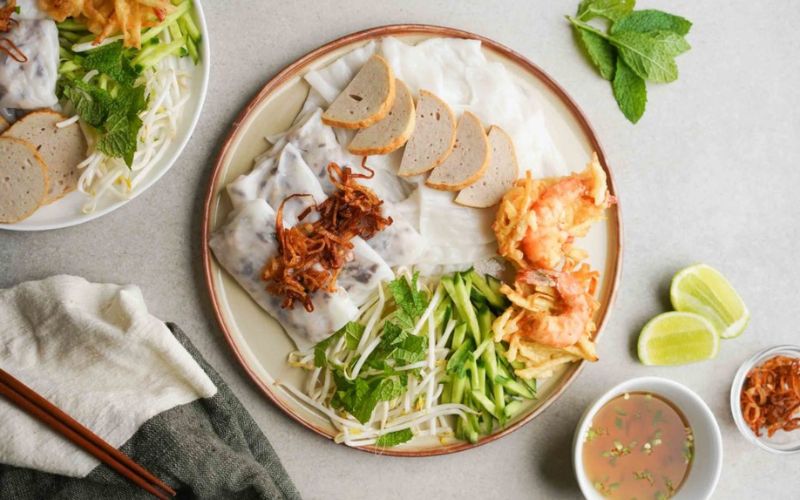
Banh cuon
Bun rieu cua (Crab Vermicelli Noodle)
This is a traditional Vietnamese soup with clear stock, rice vermicelli, tomato broth, and minced freshwater crab or shrimp paste on top. You can easily find this dish in any corner of Hanoi.
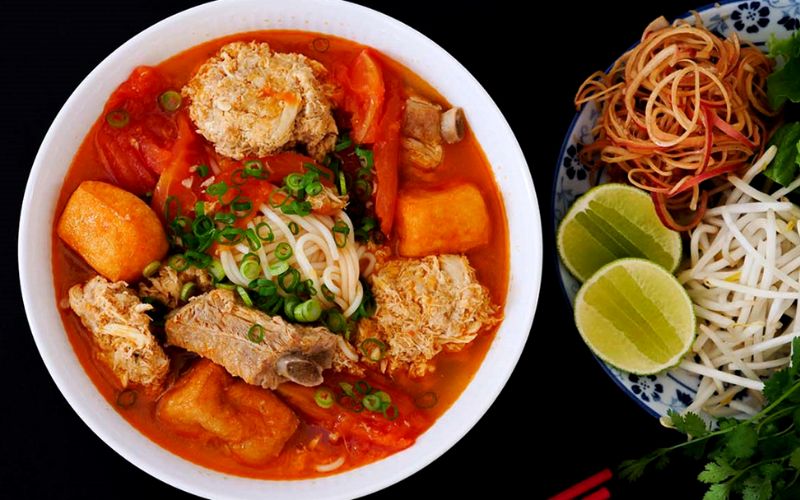
Bun rieu cua
Souvenirs of Hanoi
Silk
Van Phuc Silk Village is 10 kilometers from Hanoi’s center. This village is well-known for its silk weaving. Unlike ordinary silk, the silk used here is soft, thin, airy, and light. You can also buy silk ao dai (Vietnamese traditional dress), hats, clothes, and towels from the shops on Hang Gai, Hang Trong, and Ly Quoc Su Street.
Ceramic
If you have the chance to visit Hanoi, do not miss the Bat Trang Ceramic Village. Visitors can not only purchase pottery souvenirs at bargain prices, but they can also learn how to make ceramic products themselves. However, because these items are quite fragile, they are difficult to transport home.
O Mai (a type of jam)
O Mai is the essence of Hanoi cuisine, with sour, spicy, salty, and sweet flavours. O Mai has a wide range of flavours and prices. It is dried, so it can be stored for a long time. Hang Duong Street is an excellent location for selling O Mai. You can stop here and sample various types of O Mai before deciding on your favourite.
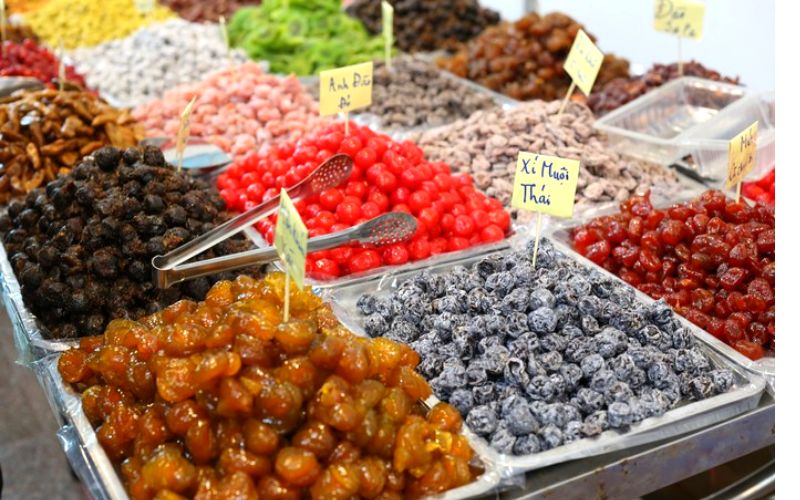
O Mai
Lotus tea
The lotuses begin to bloom during the hot summer months. This is the ideal time to enjoy a cup of lotus tea to help you beat the summer heat. When visiting Hanoi, you must try the city’s lotus tea, which is subtly sophisticated.
We hope the information in the article “Hanoi travel guide” will be helpful to you. If you want to have more information and ideas to build an unforgettable itinerary in Vietnam, do not hesitate to contact us!
Start planning your tailor-made tour with 1-1 help from our travel advisors.
- Plan your tailor - made trip with a local expert
- Book securely with money-back guarantee
- Travel stress-free with local 24/7 support
